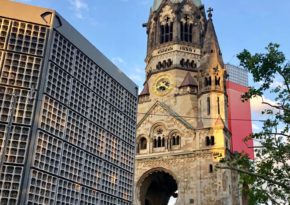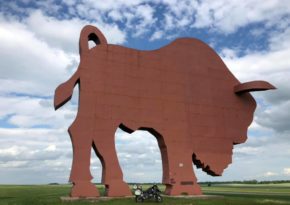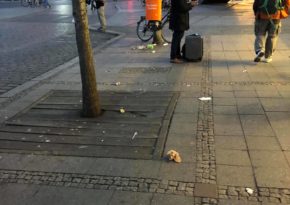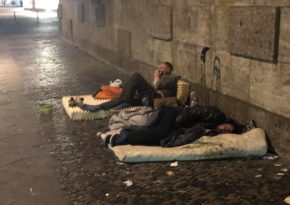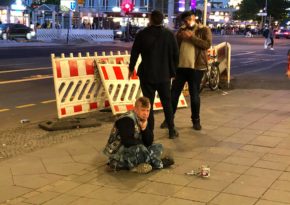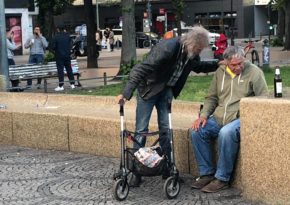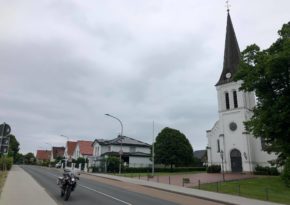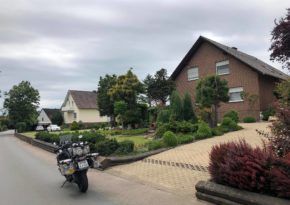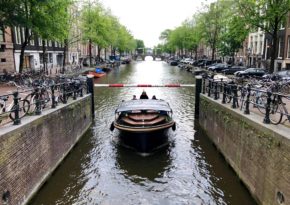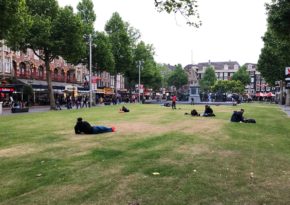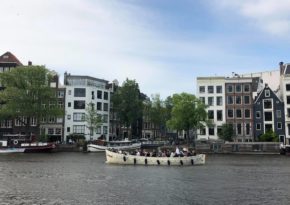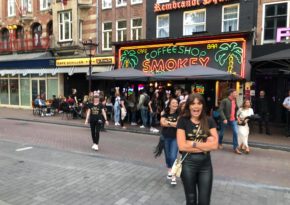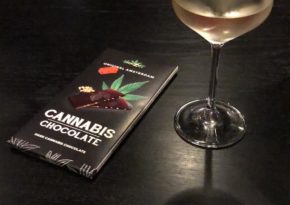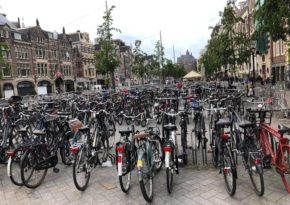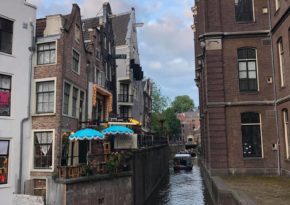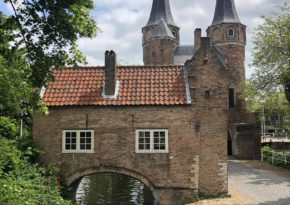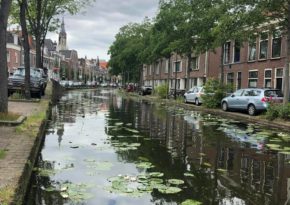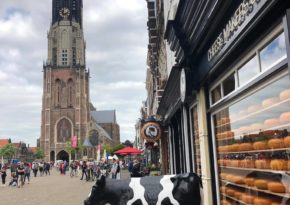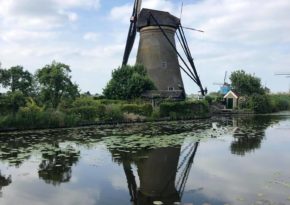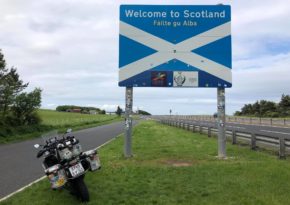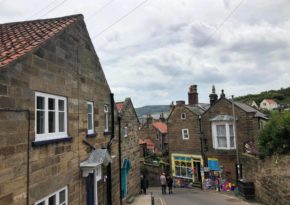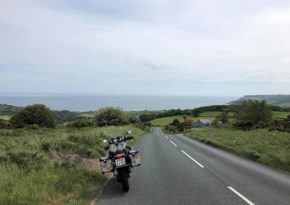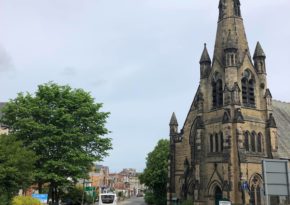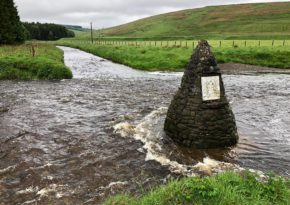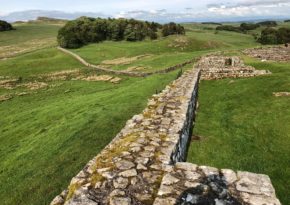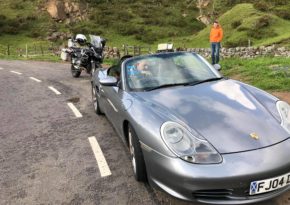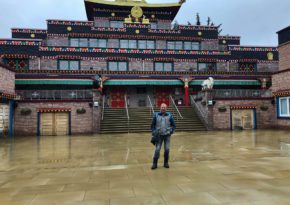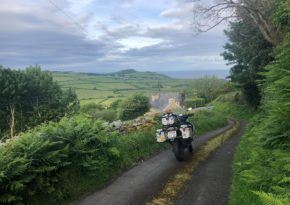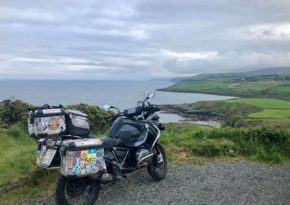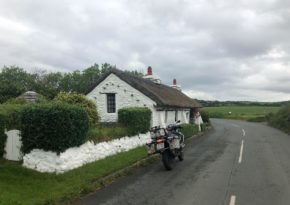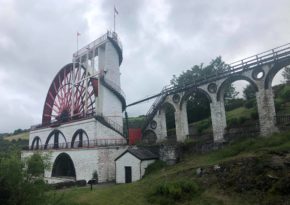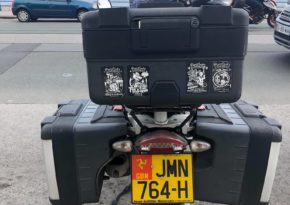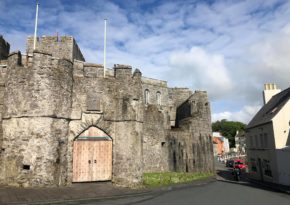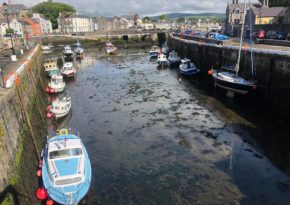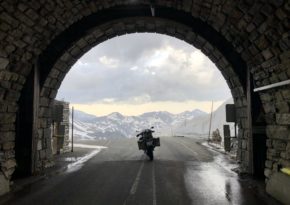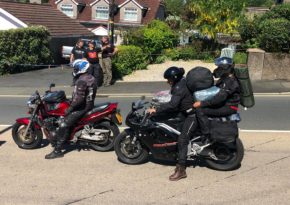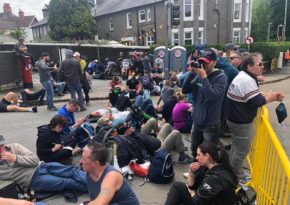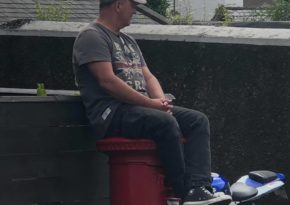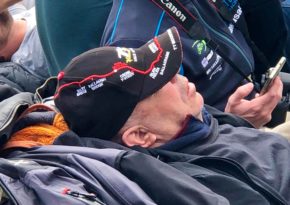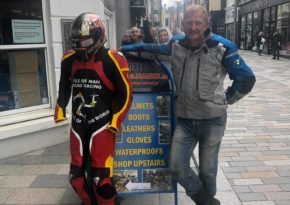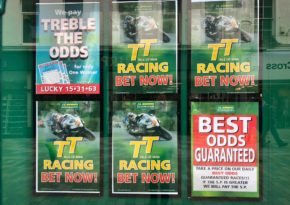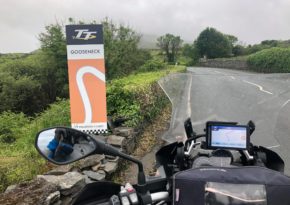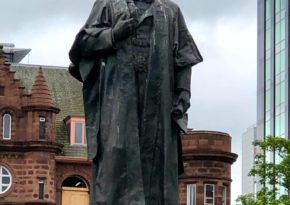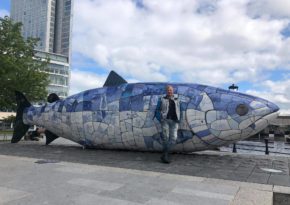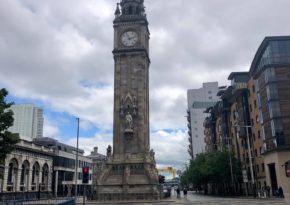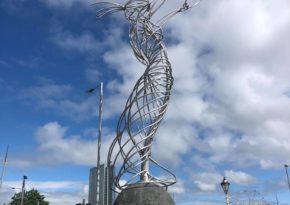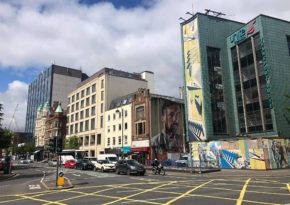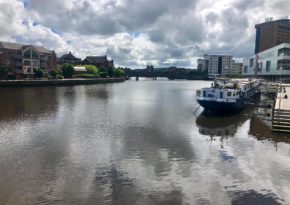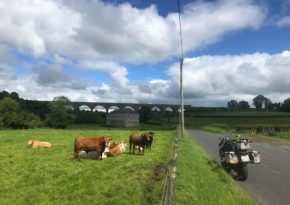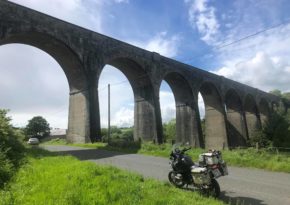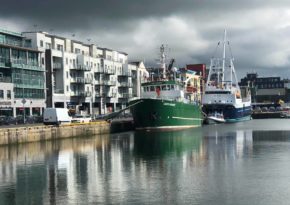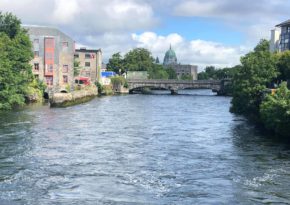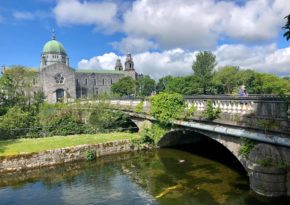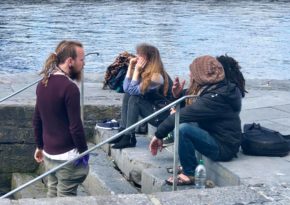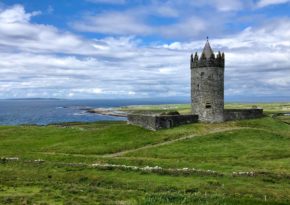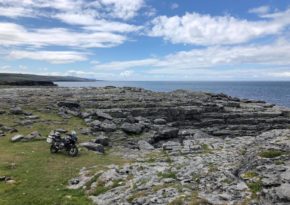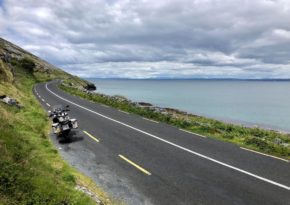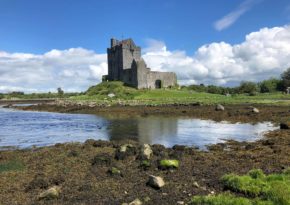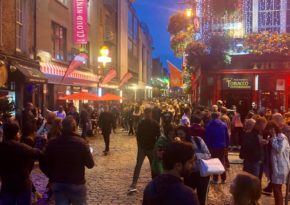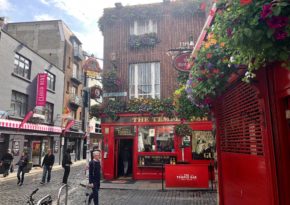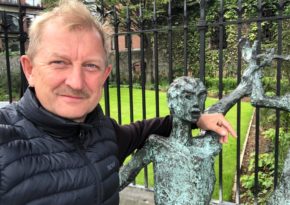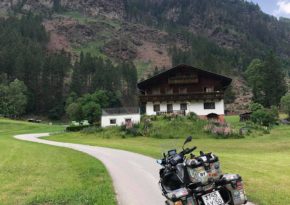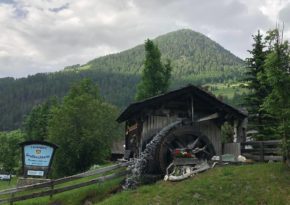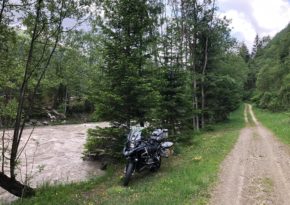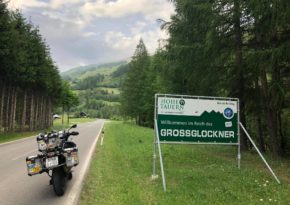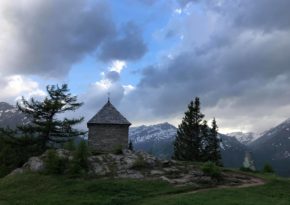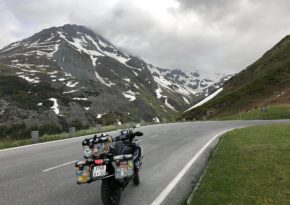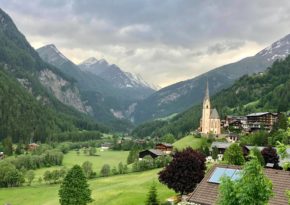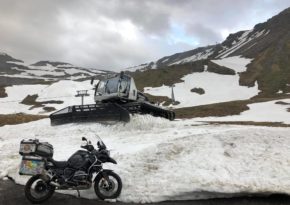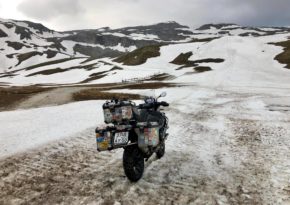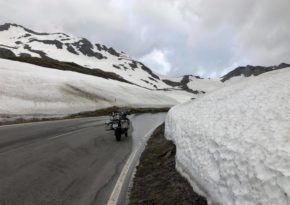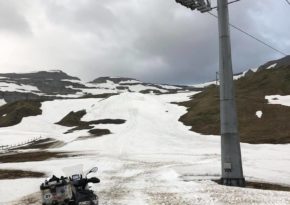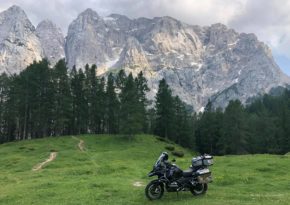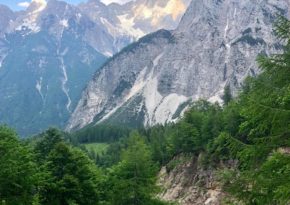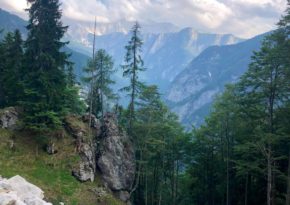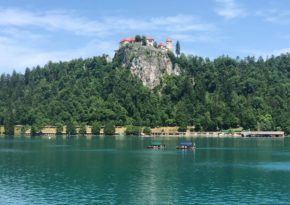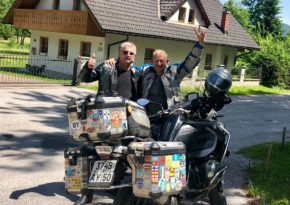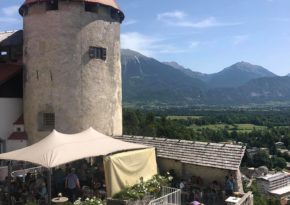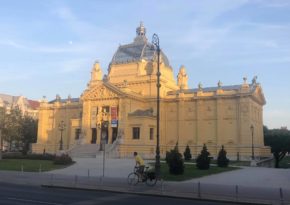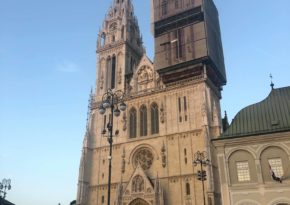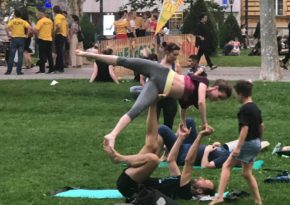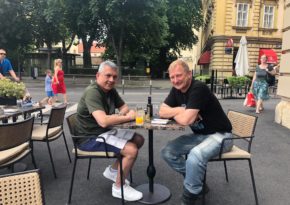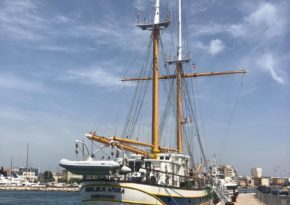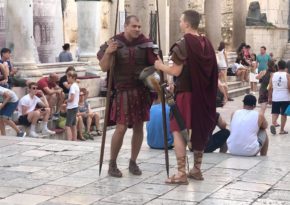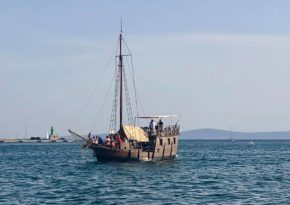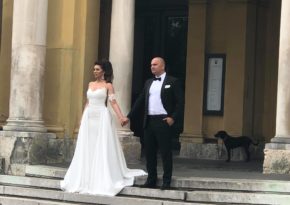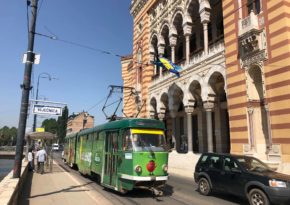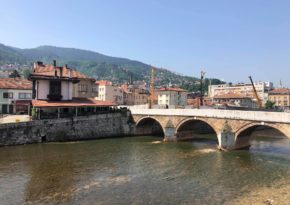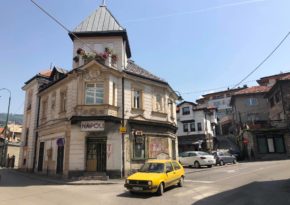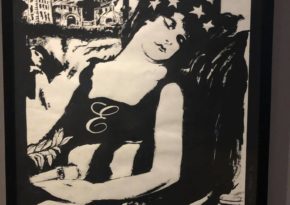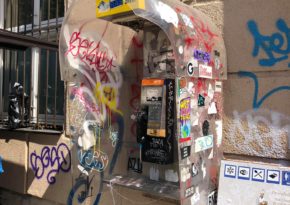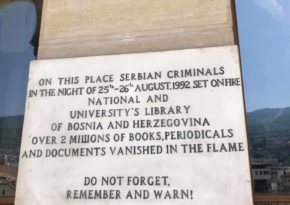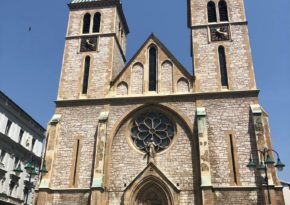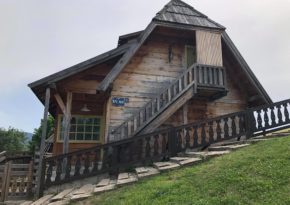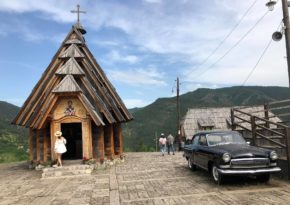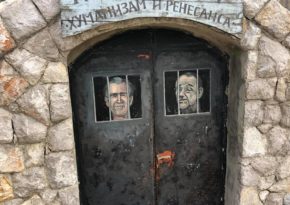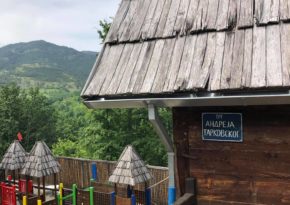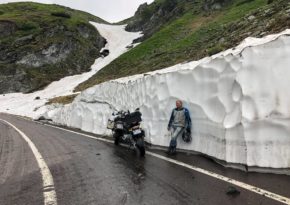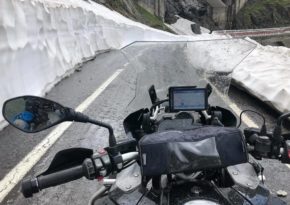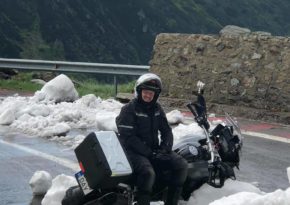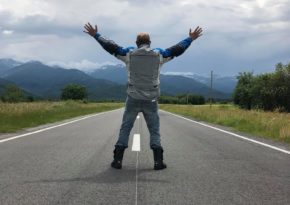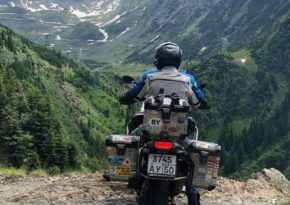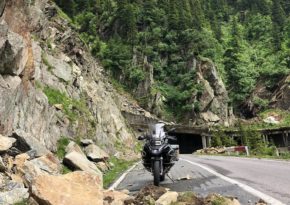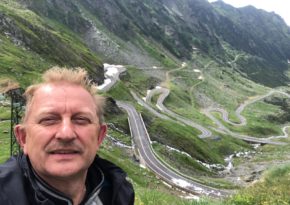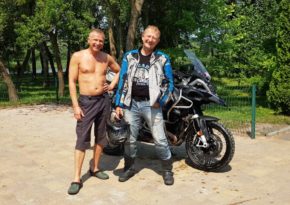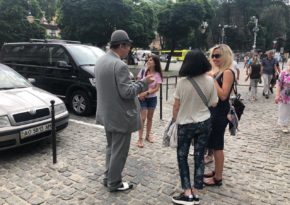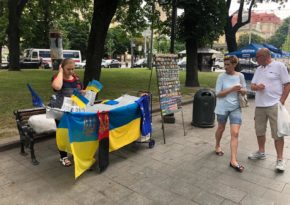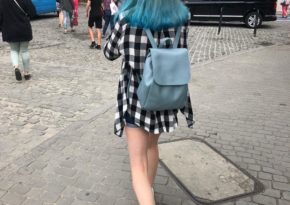A motorbike tour around Europe 12,000 km long. June 2019
Europe greeted me with cold and heavy rain. When I was approaching Brest, clouds had already covered the sky and lightning flashed. We passed the border in the downpour. The Polish officers were checking my documents for a long time, so I didn't manage to reach Warsaw on the first day of the trip. There were 150 kilometres left.
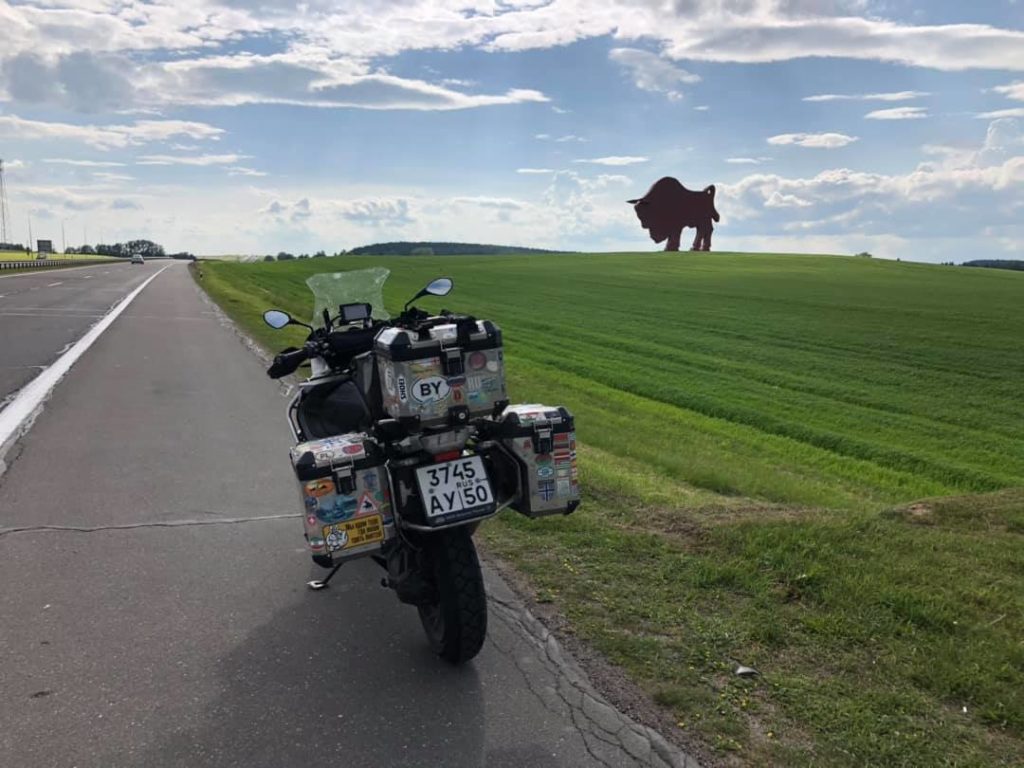
But I wasn't upset with this fact because the hotel named Pajero (like an automobile) in the small town Biała Podlaska turned out to be very cozy and just awesome!
The next day I got a little lost in Warsaw traffic jams and then raced to Berlin along an excellent motorway. I reached it in seven hours.
The capital of Germany surprised me a lot. I haven't been to Berlin for 15 years and in my memory it remained as a convenient and tidy city. Now there is almost nothing left from that beautiful metropolis. After walking along the central streets, I felt disappointed about the things I saw at every step. There were dirty roads, garbage, a huge number of homeless people and beggars, dug-up streets, vandalised walls and a lot of people clearly not of German nationality. That's what the capital of Germany has become.
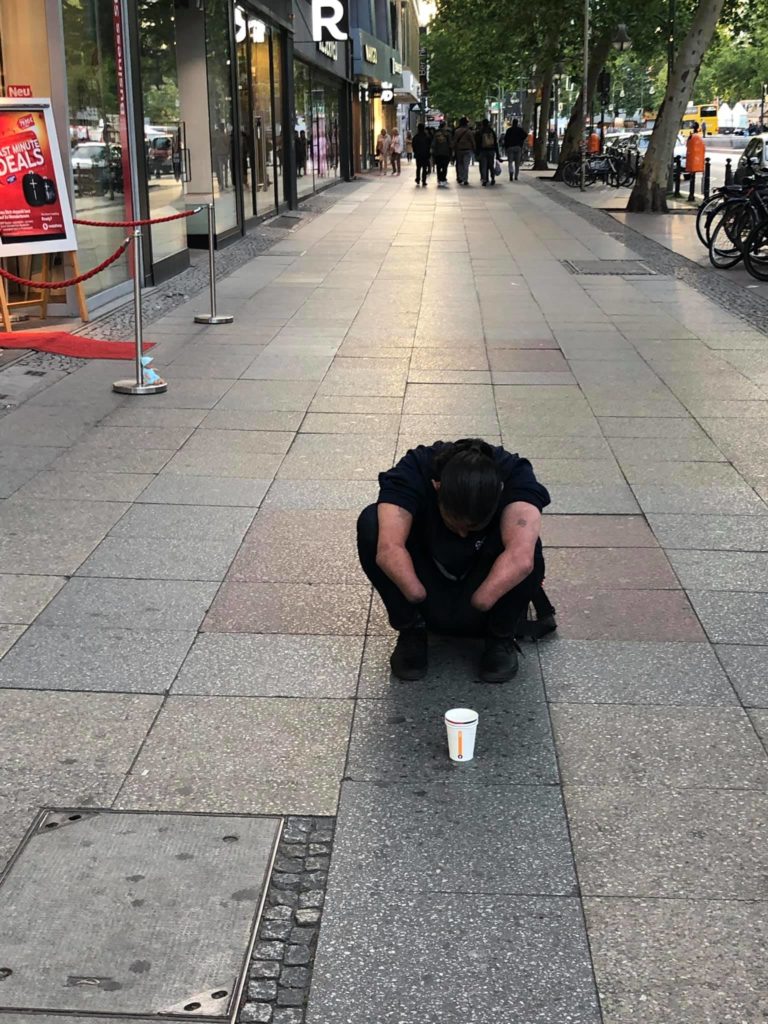
That's a pity that Berlin followed London and Paris and gradually began turning into a garbage dump.
Tomorrow I'm going to another capital and the most cheerful city in Europe, Amsterdam.
It's a pleasure to go along the German highways by motorbike or car!You can keep a cruising speed of 180 km/h. And at the same time, you still have to give way to BMWs, AUDIs and other Mercedes, which are catching up from behind.
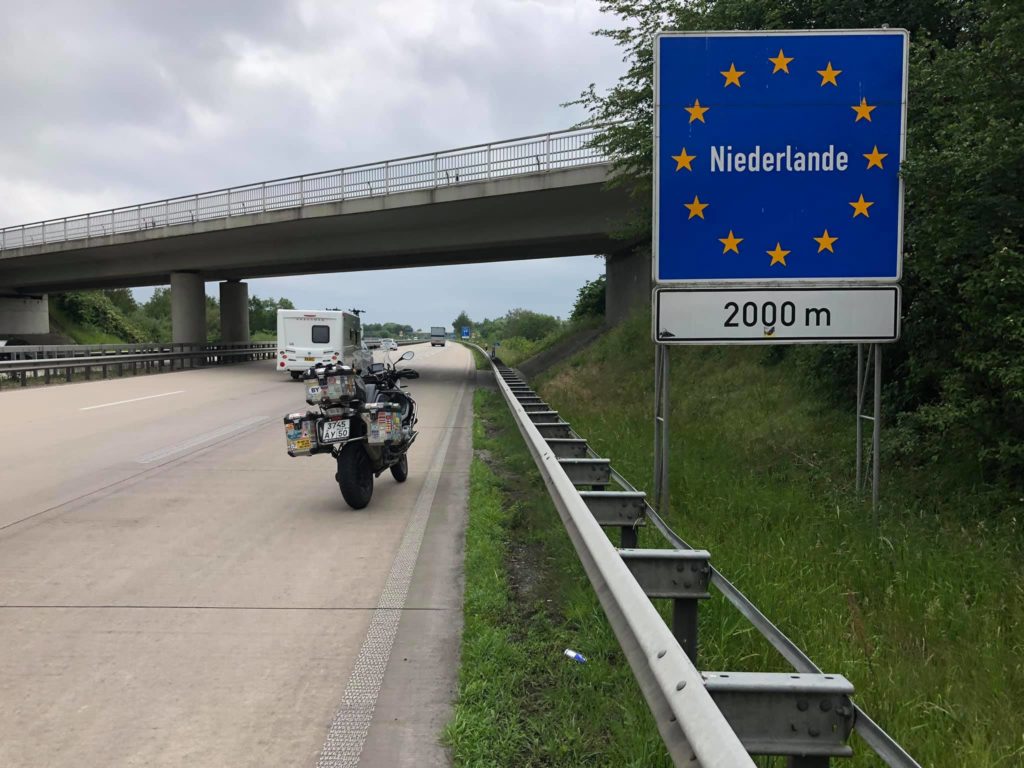
One drawback is that at this speed the motorbikey consumes gasoline like a camel in the desert: 7.5 litres per 100 km. And the further you go west, the more expensive the gasoline is. In the Netherlands a litre of the 95th costs €1.8! It's been a long time since I refueled the motorbike tank for 3700 roubles! The distance from Berlin to Amsterdam is less than 700 km, so it would take you 6 hours, including all petrol stations, lunch and smoke breaks. But it's not interesting to race along the highway all the time, especially when there are gorgeous views of perfect fields, fantastic forests and fabulous villages with windmills on your way!
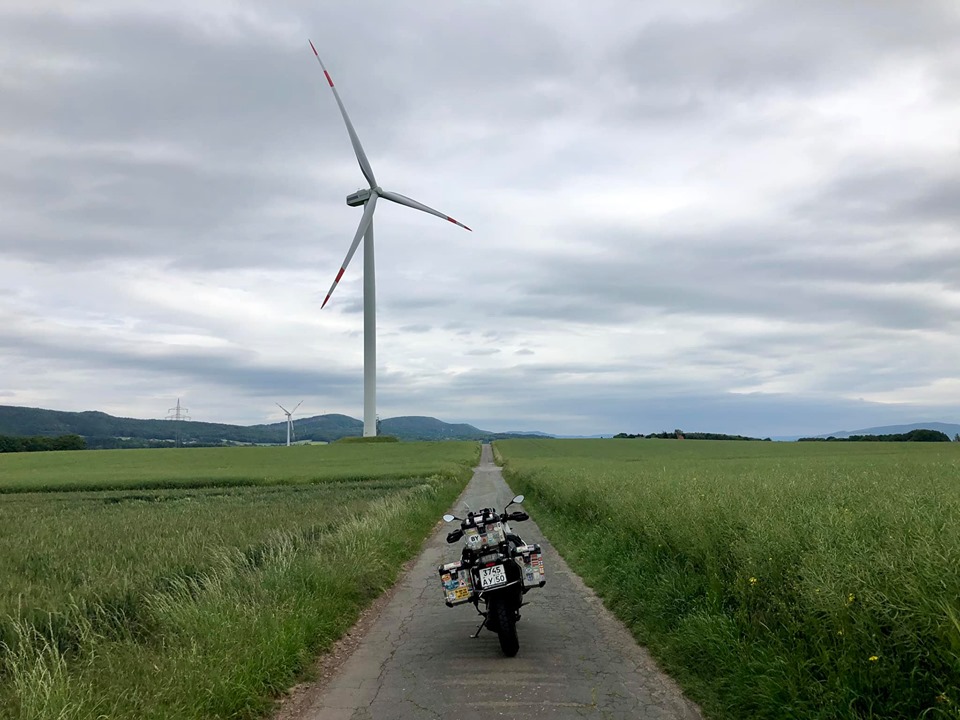
Amsterdam is an unusual city. It can be described as a city of canals, bicycles, marijuana, museums, amazing architecture and a wonderful mood!
It cannot be confused with other European big city. You fall in love with Amsterdam at first sight as it attracts everyone with its vibe of freedom and emancipation.
There's everything for any taste. You can just walk along the streets crowded with tourists of all races and nationalities or you can travel by boat along numerous canals, enjoying the unusual architecture of houses, which stand right on the water. Also you can just lie down on the lawn and relax a little after visiting a restaurant or a café shop. Last, you can rent a bicycle and ride around the city in any direction.
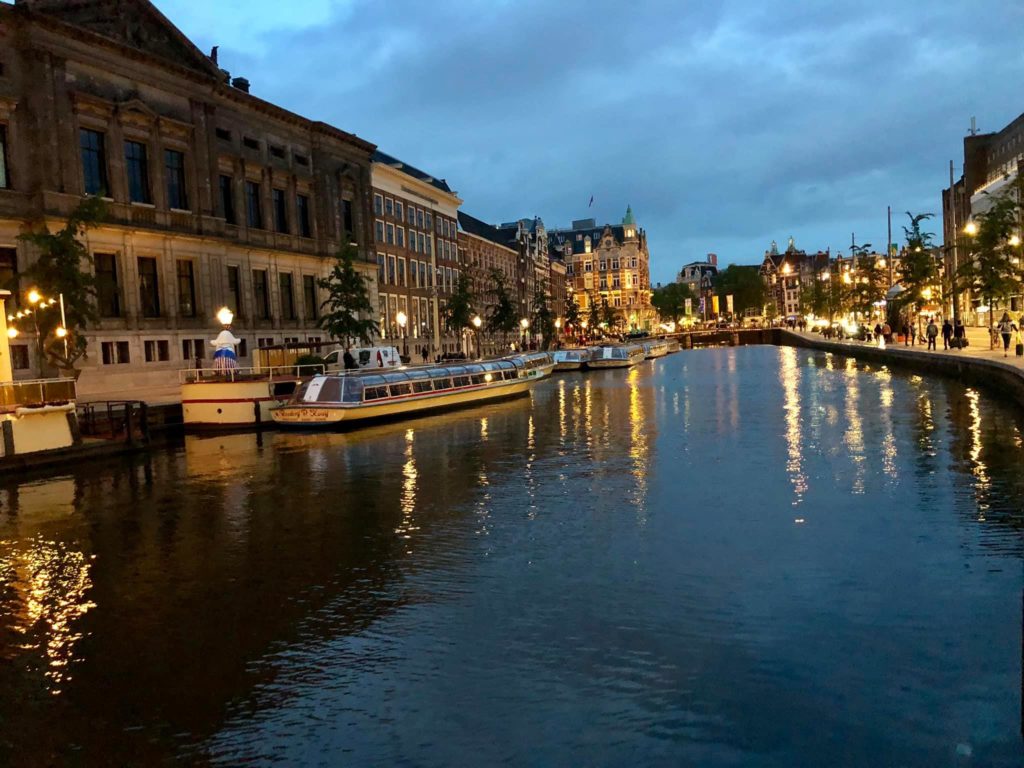
In general, Amsterdam is a city for pedestrians and cyclists. They are the main ones here unlike in most of the major European cities, where cars occupied the whole centre like iron monsters (no use to list down Moscow, St. Petersburg or Sochi). And Amsterdam is great in this respect!
Did you know that Holland or, in another way, the Netherlands, is a kingdom? A real kingdom with its own king and all the attributes of the monarchy. Although a constitutional one, but still the monarchy.
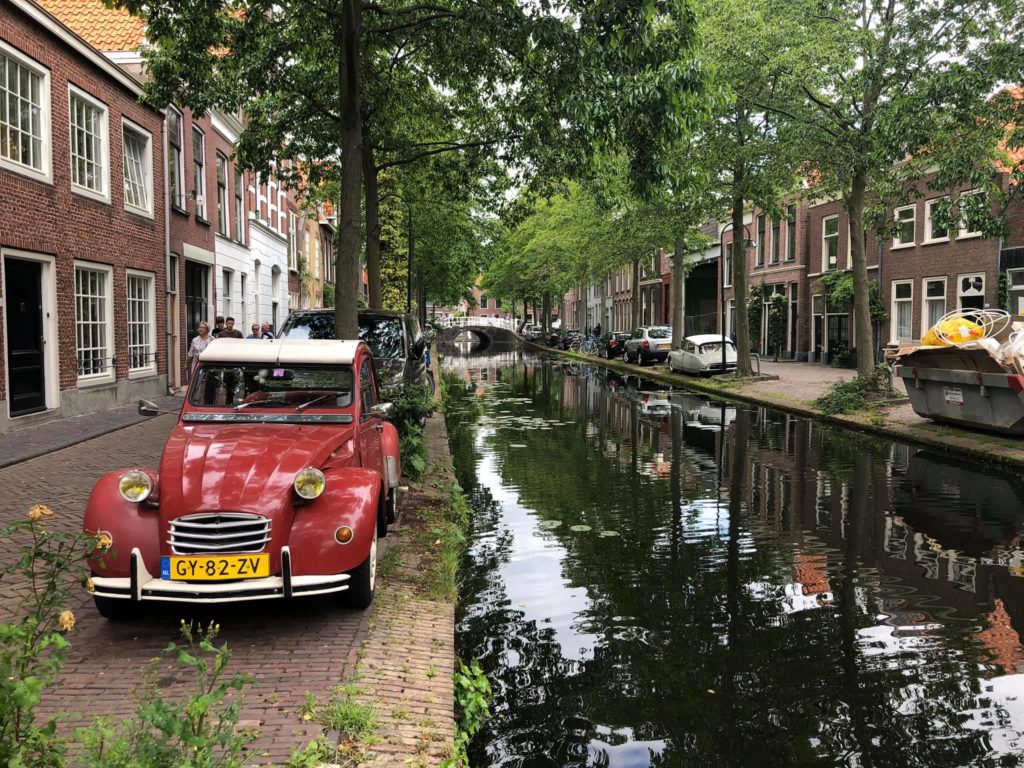
I remember the scene in the old film based on the fairy tale about Cinderella, in which the inimitable Faina Ranevskaya exclaimed: "That's a pity, the kingdom is so small! There's not enough scope for the imagination!" But this quote definitely cannot be applied to Holland.
Yeah, it is a very small country in terms of area. It is about the same square as the Moscow region. But in terms of economic development, infrastructure and life standards, and level of GDP per capita the Netherlands take the place in the top ten states. All in all, we have some problems to work on and some example to strive for!
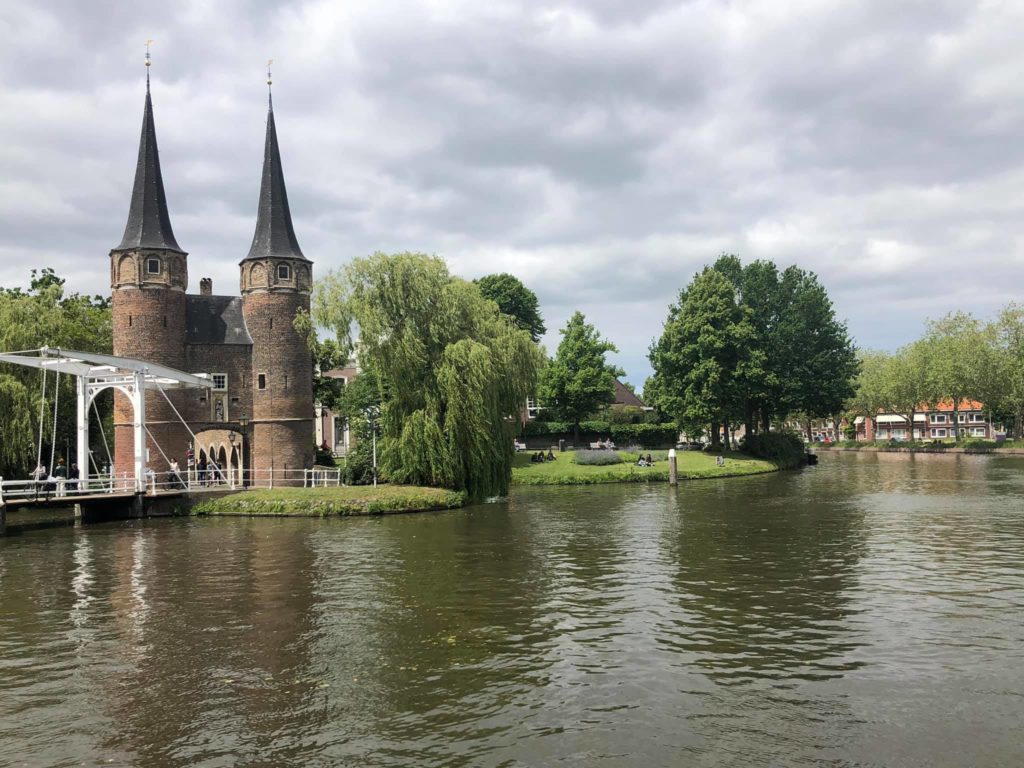
Today I had a short trip around this fabulous country. I followed my friends' advice and paved my way across beautiful small towns and villages from Amsterdam to Rotterdam…
Certainly, it isn't possible to see much in a day, but if you have magical speed boots or a BMW motorbike, then you can make an attempt! In a few photos and videos I will try to convey what I saw.
The UK welcomed me not in a friendly way. As soon as the border officers saw my passport, they began to make a fuss. First, they asked a lot of questions: where I was going, what the purpose of the visit was, what my route was, where I worked, what I was taking with me and so on. Then they sent me to a separate hangar room and in half an hour five people checked all the information about me (thanks, they didn't disassemble the motorbike). My luggage was examined very carefully and the biggest problem arose about the first aid kit. They asked me what kind of pills those were, if they had a description, what their composition was and if I had the recipe.
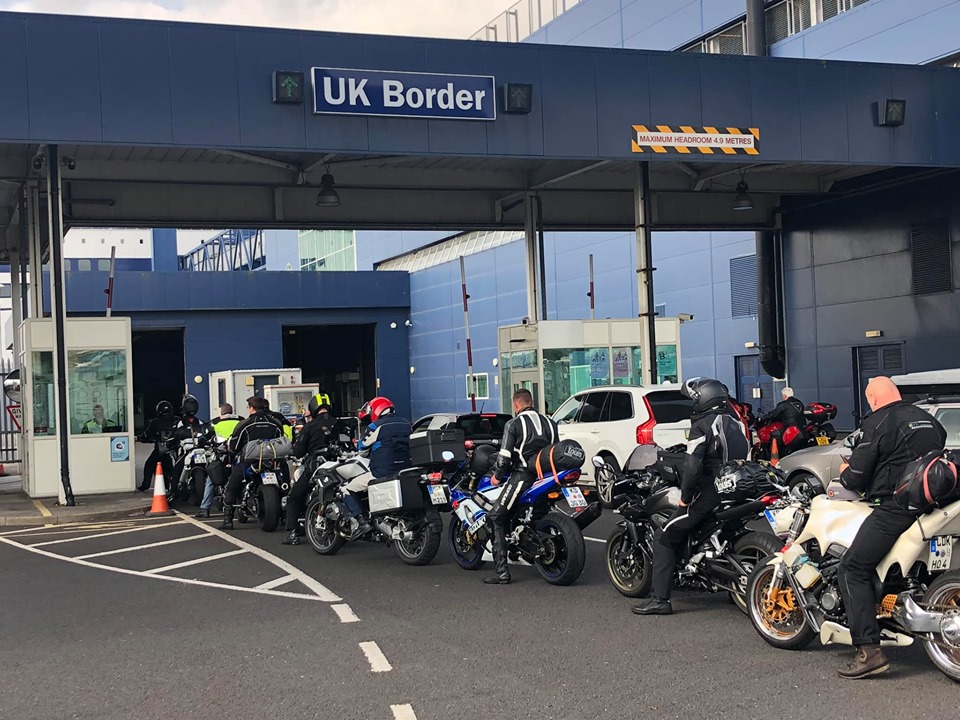
My English is not good enough to speak on medical topics. Especially when I forgot what kind of pills and vials they were. As a result, everything was sent for examination.
So keep in mind not to take suspicious items with you to England.
Today I rode 420 km from the port of Hull to Edinburgh. There I met my Edinburgh friends and stayed overnight at their place.
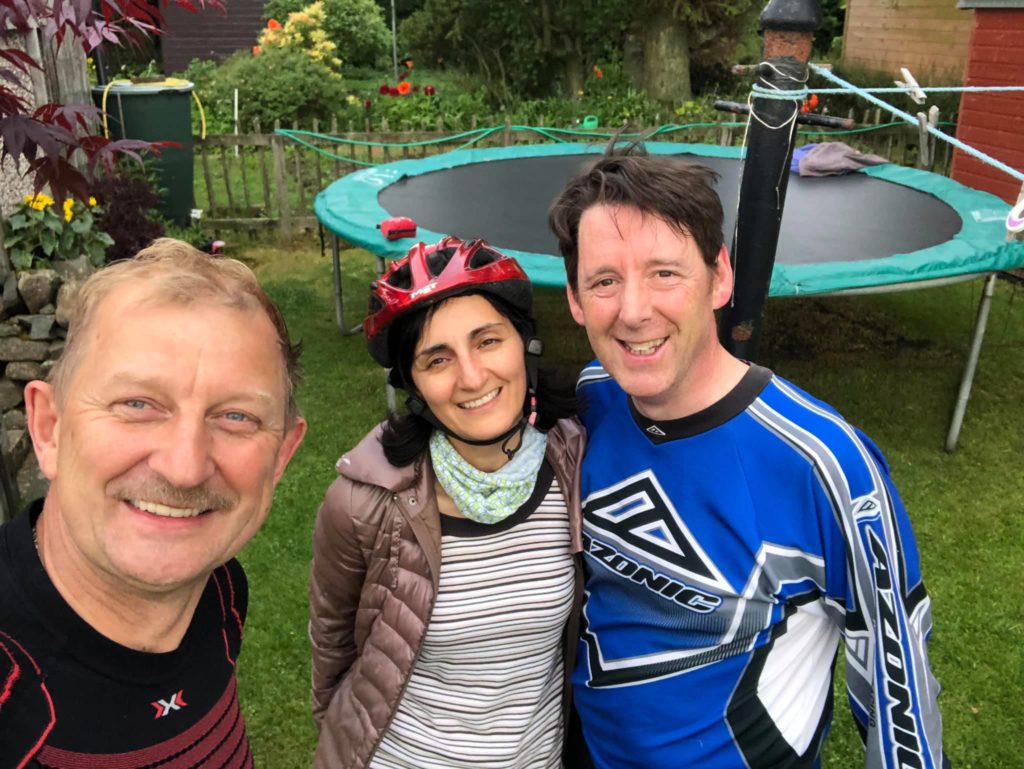
Sofia and her husband Nick arranged an amazing dinner and a bicycle ride around a beautiful park, which was located near their wonderful cottage.
Tomorrow we are going on a trip to Scotland together.
Three days in Scotland.
It's a wonderful country to travel by motorbike!
I've experienced thousands of kilometres of excellent roads, gorgeous views and minimal traffic. On the second day I finally got used to left-hand traffic and began to enjoy the endless descents, ascents and turns. The driving culture here is at the highest level. When you catch up with a car and drive behind it for a while, the driver will take to the left or even stop to let you go ahead. In the central part of the country there are many tidy and cozy towns and villages. Almost everywhere there are small restaurants and cafés where you can have a snack. A typical landscape is the fields with lush green grass, surrounded by low stone fences, and sheep, cows, horses… Just peace and quiet.
Thanks to my crazy friends from Edinburgh, Sophia and her husband Nick, who accompanied us in their classy Porsche, we managed to drive about a thousand kilometres around the country during these three days. It was not an ordinary tour of museums and castles but a real adventure, including climbing steep cliffs, prayer in the largest Buddhist monastery in Europe, racing on serpentines and a half-hour trial with the police.
The journey is going on! At the moment a huge ferry is taking me and several hundred other motorbikers to the Isle of Man, which is a small but really exciting island situated between England and Ireland.
The Isle of Man.
Right in the middle of the way between England and Ireland there is a very interesting island in the Irish Sea. It attracts attention both to its history and its current state. The island is small, so it will take you only 2 hours to slowly drive around its perimeter.
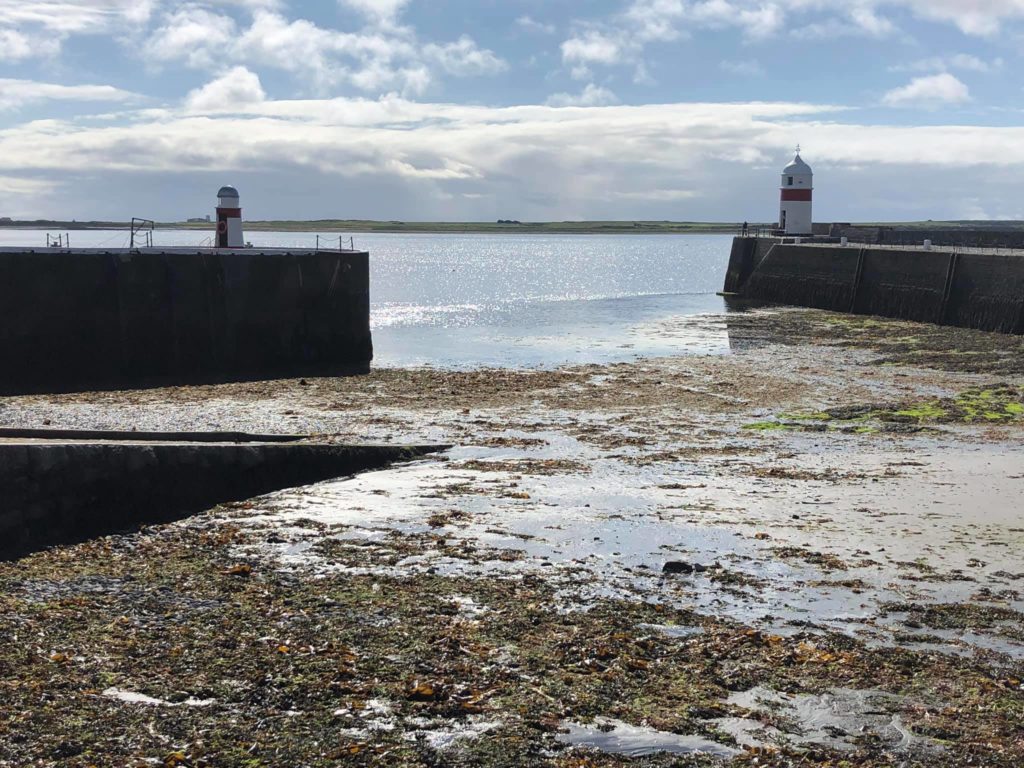
The landscape resembles Scotland or provincial England. There you will see green meadows with grazing sheep, excellent roads, and hilly terrain. There are no beggars, homeless people or refugees on the island and I haven't even seen any black people there. Houses in the cities and towns are mostly two-storey and have got a small well-kept garden and a garage for one or two cars. There are low stone fences with a green hedge nearby. Everything is very tidy and well-groomed. And silent.
The Isle of Man has got a special economic and political status, although it belongs to the Crown.
This is a European and global offshore zone. So many very wealthy people establish a company or transfer their finances there. And big money, as you know, loves silence.
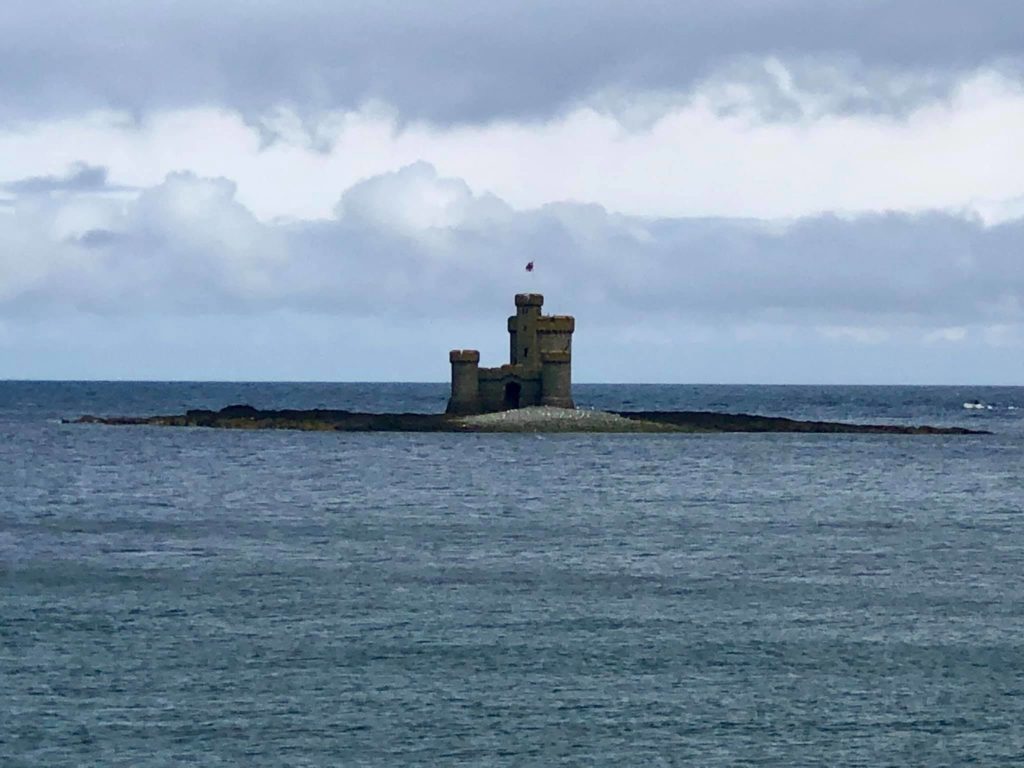
But once a year, from the end of May to the beginning of June, this silence breaks with the roar of a thousand engines. Huge ferries carry countless numbers of people and motorbikers here. Like locusts, they crowd the streets, alleys, build tent towns and drink tons of beer, eat hot dogs, french fries and other fast food. But I will tell you a little later why they come to this small island.
The Isle of Man TT Motorbike Race has been held annually from late May to early June since 1907.
It is famous for the fact that it does not take place on a special track but on a regular one, which is blocked before the start of the next race. The route is 60 km 740 m long. It is looped and runs across towns and villages in the northern part of the island. According to the statistics of the entire duration of the race since its beginning in the last century, 268 riders have died. Therefore, it is considered the most dangerous route in the world.
I was lucky to attend this motorsport festival and even ride along the legendary highway.
Without competition, so to speak. ;)
The route is exciting and really dangerous! There are a lot of smooth and steep turns, as well as straight high-speed sections, in which the riders race at speed of more than 300 km/h!
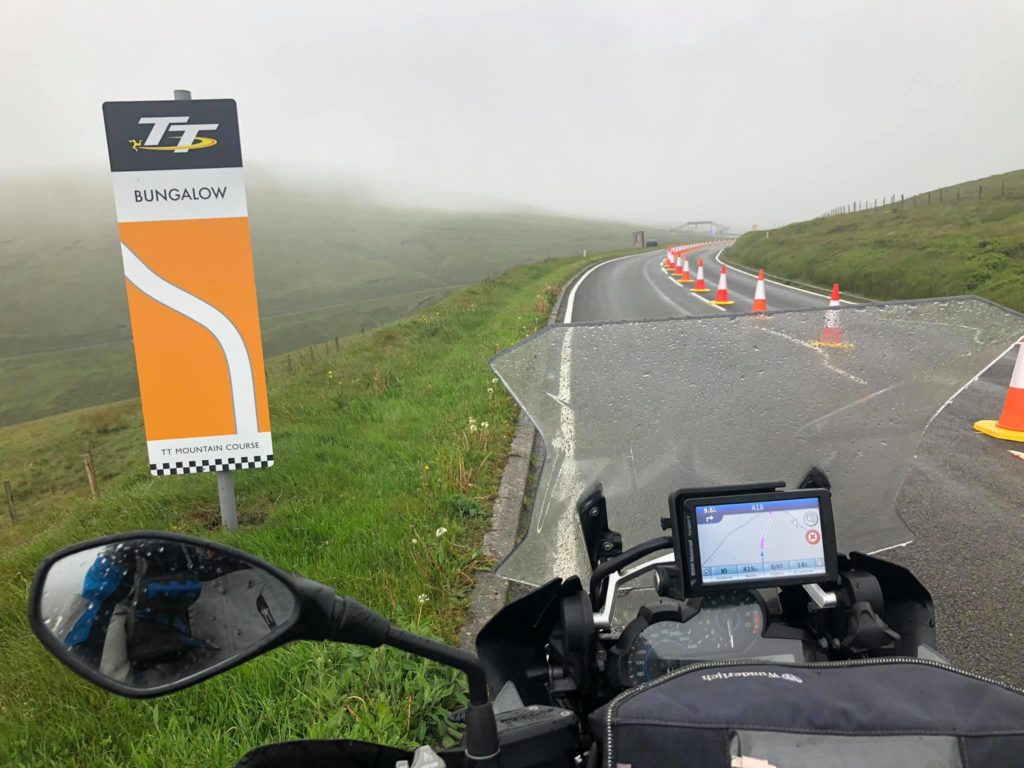
Each of these turns and particular sections of the route have their own names and are marked with special signs standing on the side of the road. The hilly terrain is quite specific, so if you do not control the speed, you can fly several metres in the air without touching the asphalt.
It's not even the race itself that is interesting (for example, when another competitor rushes by you in a second), but the atmosphere around it. Wherever you are on this island, everything reminds you of it. There are motorbike traffic jams in the streets; live reports and interviews with race participants are being broadcasted from retro-style speakers hanging on each pole; shops and tents are filled with all kinds of advertising products, newspapers, magazines, flags, banners. Everything shouts about the Isle of Man!
A curious incident happened to me in the evening, when I was coming back along this highway from the northernmost point of the island.
I had to catch the ferry, so I was riding pretty fast. Of course, not like the participants of that race, but still. :) I looked in the mirror and saw that the police were catching up with me from behind with a flashing light. I slowed down, they overtook and a running line lit up on the entire rear window of their car: "Follow me!". Damn it!!! Bad luck again. I followed them slowly to the police station. They started to do my head in and asked why I had been speeding. I exclaimed that I was missing the ferry! They warned me that I had to drive according to the rules anyway. But they did not fine me. They released me on my word of honor that I wouldn't break the rules again. That's just a pity they didn't let me make a new track record. ;)
Despite everything, I caught the ferry in time!
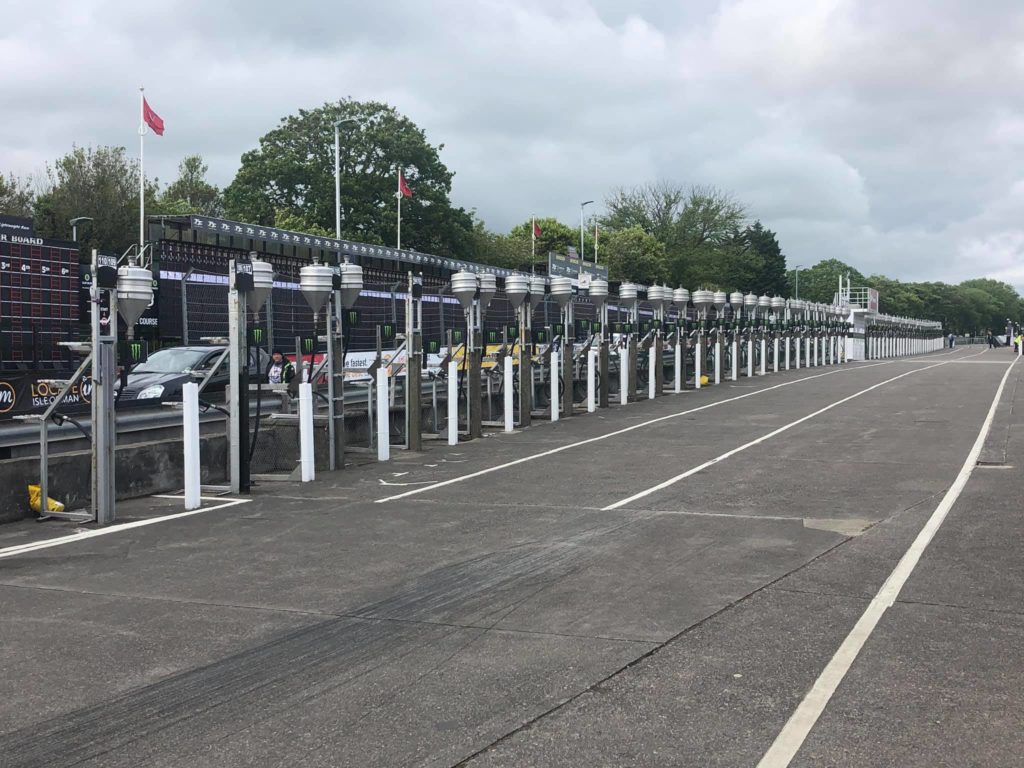
Ireland
There is such an island in the Atlantic Ocean on which one and a half states are located. The ferry from Douglas arrived at the port of Belfast, the capital of Northern Ireland, at 2:30 a.m. I went down to the lower deck and began searching for my motorbike among his hundred brothers that all were returning from the Isle of Man.

I untied the rope with which the caring workers of this vessel tied my motorbikey to the metal railing and 15 minutes later I left the iron belly of the multi-storey monster, riding through toxic fumes to freedom. It was a cold, rainy night. Fortunately, the hotel was not far from the port. I wanted to get to a cozy room, take a shower and go to bed as soon as possible.
Belfast
In my head the name of this city has always been associated with the eternal war between Catholics and Protestants, terrorism, explosions, barricades and other bloody events. Back in Soviet times, the TV programme Vremya periodically showed reports from the streets of Belfast, where soldiers of Her Royal Majesty mercilessly shot unarmed children. Actually, that used to be a reality during the conflict, which lasted throughout the entire last century and had a thousand-year historical background. As a result, several thousand civilians and military died and a wall was built in order to separate Catholics' and Protestants' neighborhoods. How was it possible in a civilized European country? This question is left unanswered.

Walking along the central streets of Belfast, I could hardly believe that such terrible events might have happened in this modern, tidy and beautiful city. Belfast is a really interesting place: the contemporary tall buildings made of glass and concrete are artfully combined with historical buildings and temples. There are many monuments and the most remarkable one is the memorial complex dedicated to the people who died on the wrecked Titanic. All the names and surnames are stamped on granite. By the way, this ship was constructed and went on its first and last voyage exactly from Belfast.
Well, I hope that my journey won't be as short as the legendary Titanic one. Now I'm going to the west coast of Ireland.
"I can't accept this money from you", the cashier girl looked at me in surprise.
"Why?", I became surprised too.
"It's pounds, English pounds".
"Yes, I see. But what's wrong?"
"We accept euro cash or you can pay by credit card", she answered with a smile.
And only then I got that I was already in another country. It may seem strange, but somewhere I crossed the border between Northern Ireland (which is a part of the UK) and Ireland, however, I didn't notice where and when it happened. This way I left the territory of England and arrived in the Schengen area without getting a stamp in my passport.
Very strange, indeed… Well, anyway, I arrived in the small port town Galway on the west coast at the end of the day, having ridden about 400 km along crooked country lanes from west to east across the country. On my way I got into heavy rain twice, but this is a common phenomenon for this area. It's unusual when the sun is hot and the temperature is +18°C, for example. The next day my route was planned along the Wild Atlantic Way, which is a beautiful road along the Atlantic coast. However, it turned out to be not Wild at all, but on the contrary, very Safe. That's a touristic route, every location is very carefully marked: where to turn or where the View Points are, "walk only along the paths'', "do not climb over the fence", "do not litter", "no smoking" And so on… The road is narrow, single-lane and has a stone fence along the entire route. I had been riding several dozen kilometres until I found a hole in the fence to look at the sea and the rocks. Unfortunately, this road is far from Kolyma highway! ;)
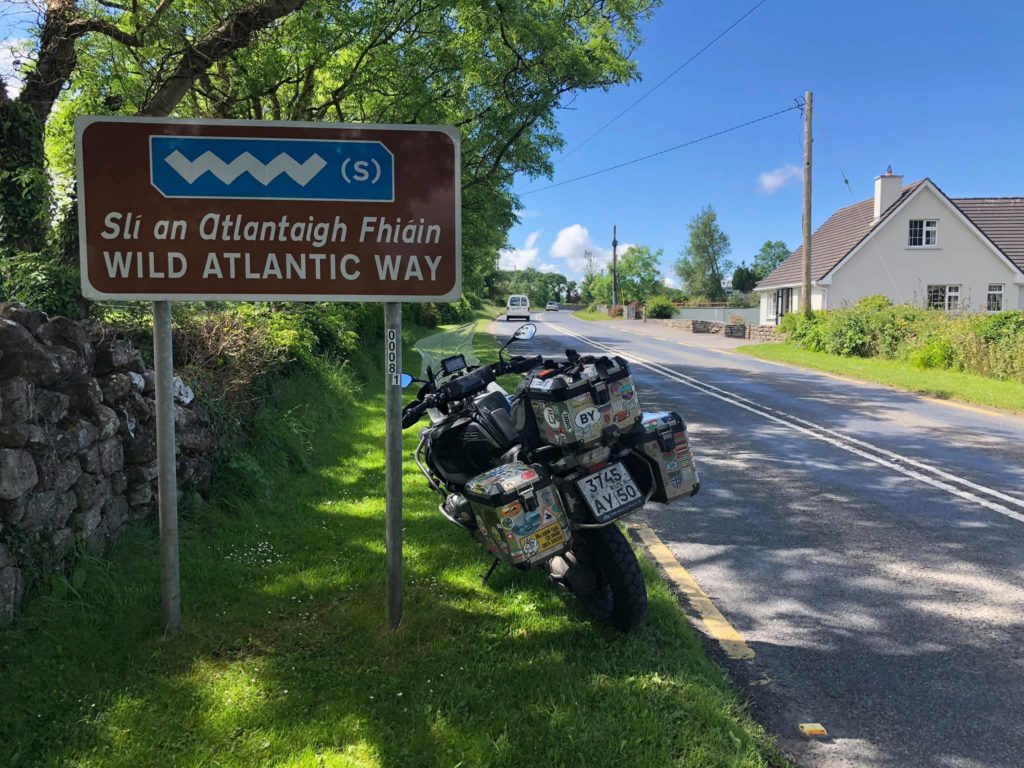
On my way I dropped by for an hour in the village Adare, which is near the town Limerick. That's a lovely little village with golf courses, thatched houses, flowers and well-groomed lawns. Everything is pretty and tidy like in a fairy tale. While I was returning, I got into a terrible downpour again and the temperature dropped to +10°C, so I rode along the highway to Dublin, violating all speed limits. I was glad that I had taken an electrically heated vest with me, since it came in handy more than once. Also I didn't turn off the heating of the motorbike handles for the last week at all.
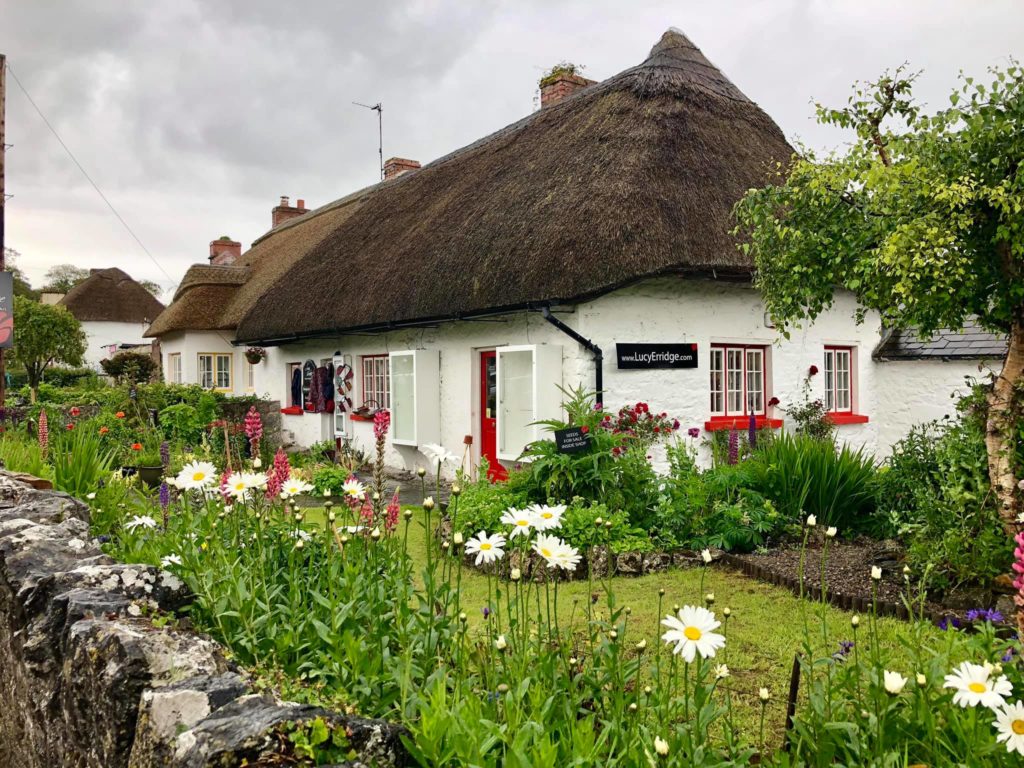
A promenade around Dublin on Friday evening left a lot of impressions. The central narrow streets with pubs and other entertainment establishments were crowded with the slightly drunken and sometimes completely drunken Irishmen.
I stopped at the entrance to one of those pubs with a colorful facade and the loud music coming from inside. A tall guy with a painted face and a piercing hole in his ear was standing at the entrance and holding the door handle. He looked at me absent-mindedly, raised his free hand and mumbled something, helping himself with a gesture. He must have spoken Irish since I didn't understand anything. Or it was the half a bucket of beer, which he had drunk that evening, that might not allow him to concentrate. I waved him back and went inside.
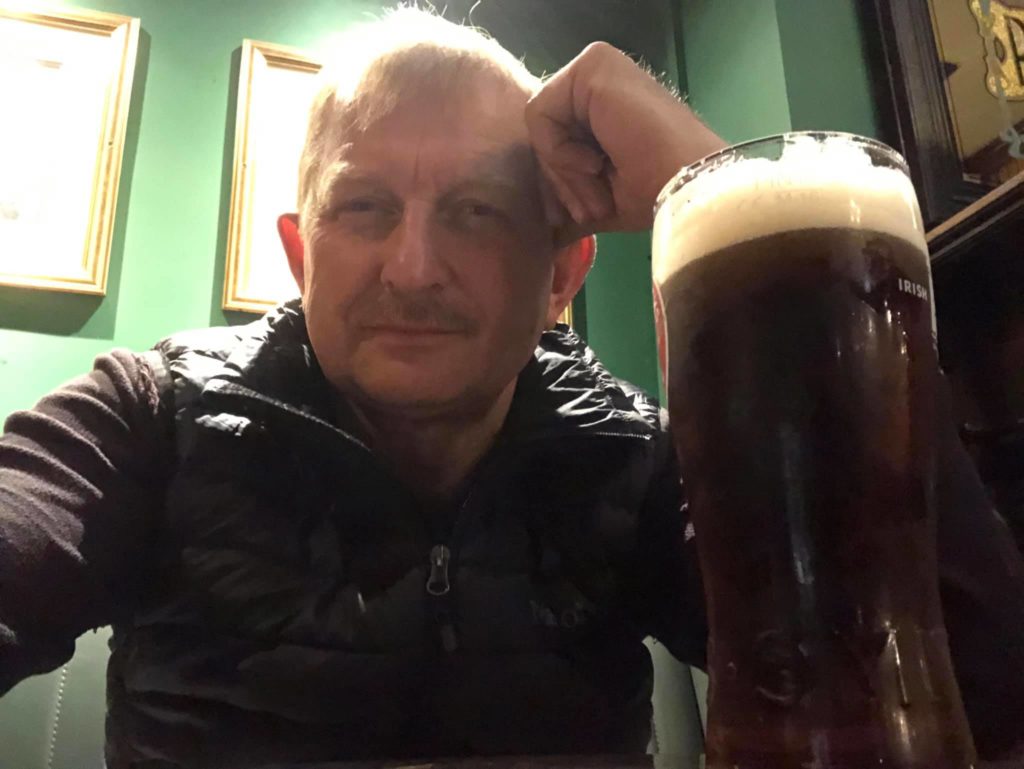
Everything was there: noise, bustle, loud music, waiters running back and forth with glasses of beer and food. I was glad that I had decided to enter. I asked one waitress to have a seat somewhere and she took me to the darkest corner, where I settled in with pleasure and immediately ordered a glass of light Guinness. Half an hour later I was already on the same wavelength as the visitors of this wonderful place and it seemed to me that I even began to understand the Irish language a little.
Since my hotel was located right by the river, it was not difficult to find it after such a wonderful evening.
Having woken up after a rough night I went for another promenade around Dublin and it only strengthened my opinion that this city is good to spend a weekend in. Not as good as Amsterdam, of course, but also quite worthy!
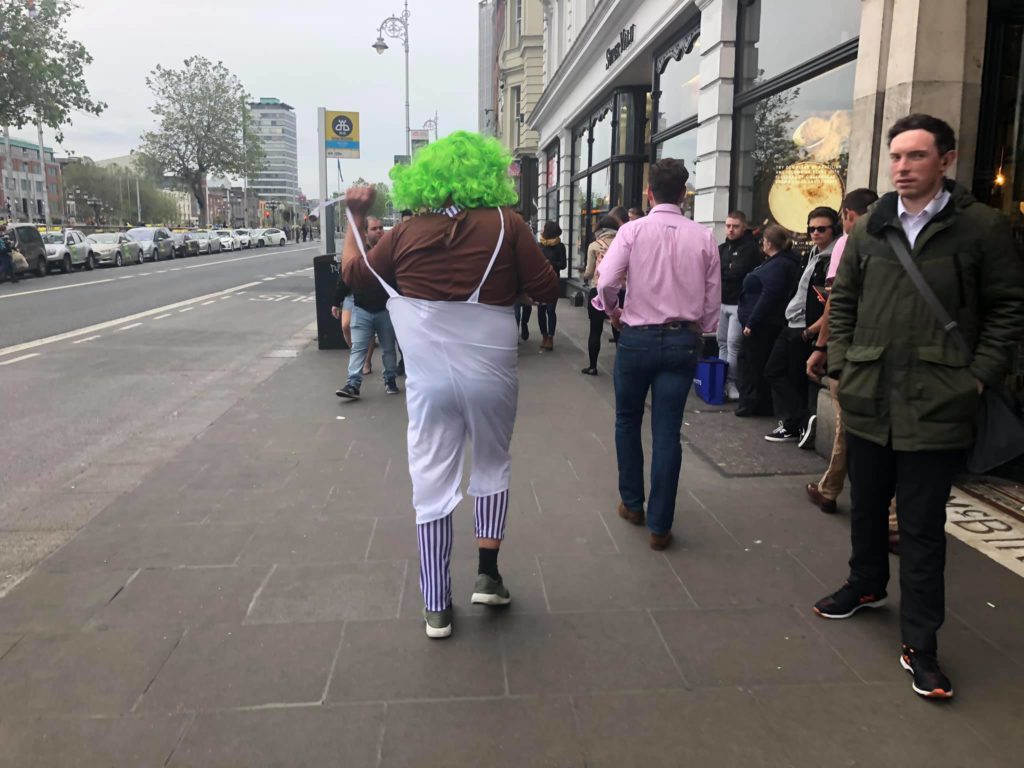
The rain was drumming at the windowsill all night. It was morning and I woke up in a small hotel in the Austrian city Bregenz, which is located on the shore of Lake Constance. The first thing I did was look out the window. Streams of cold water flowed from the dark sky, as if it was a giant shower.
After breakfast I put on a raincoat and decided to take a walk around the city against all odds. The lake was stormy, the waves were crashing with a rumbling at the granite embankment while the wind was trying to take my cap off my head. It was cold. Wet. Uncomfortable. I did not want to ride a motorbike in such weather, especially in the mountains, the peaks of which were not visible in the fog and clouds at all. Therefore, since the hopes for an improvement in the weather were vague, I packed my things, got into my raincoat for the ...tieth time and set off for the direction of Innsbruck.
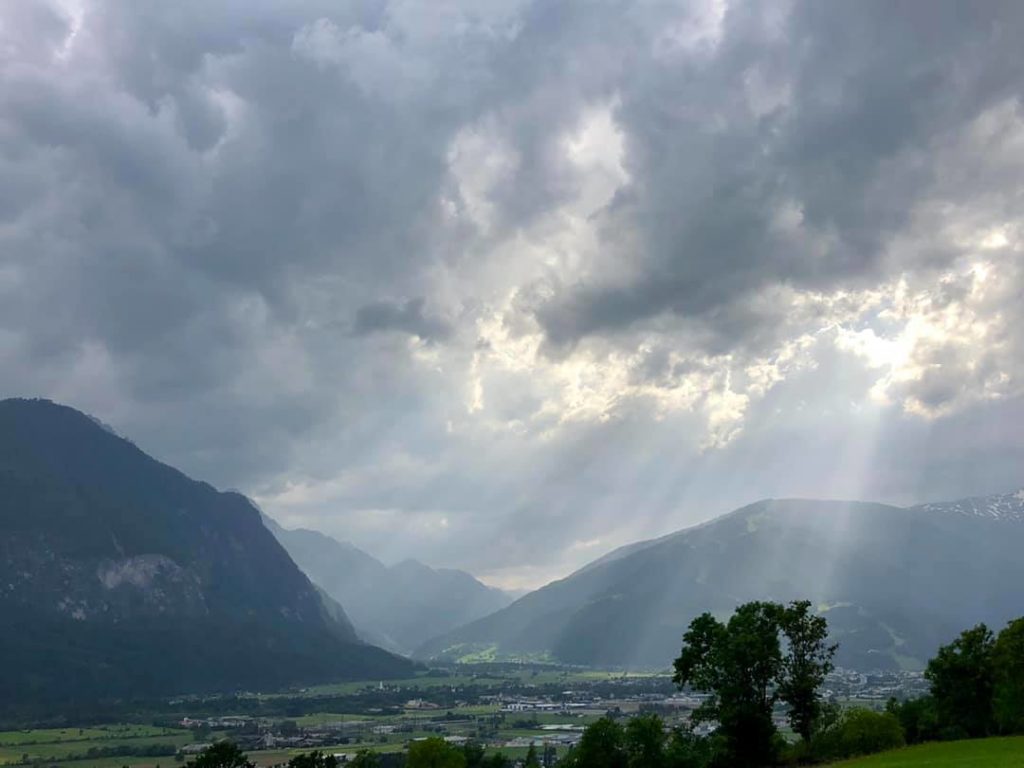
It's hot in Moscow, but here you are facing a flood, a "catastrophe", as the guy at the petrol station described to me the weather in the north of Europe that has kept for weeks. A hundred kilometres later I rode into another tunnel, which turned out to be very long (I think, at least, 15 km). Apparently, it was paved through a mountain range. And as soon as I went out of it, I blinked in surprise. The sun was shining like a huge spotlight in the clear, almost cloudless, sky. 10 minutes later I made a stop to take off my dried-out raincoat and looked at the dashboard. It showed +26°C! That was unbelievable!
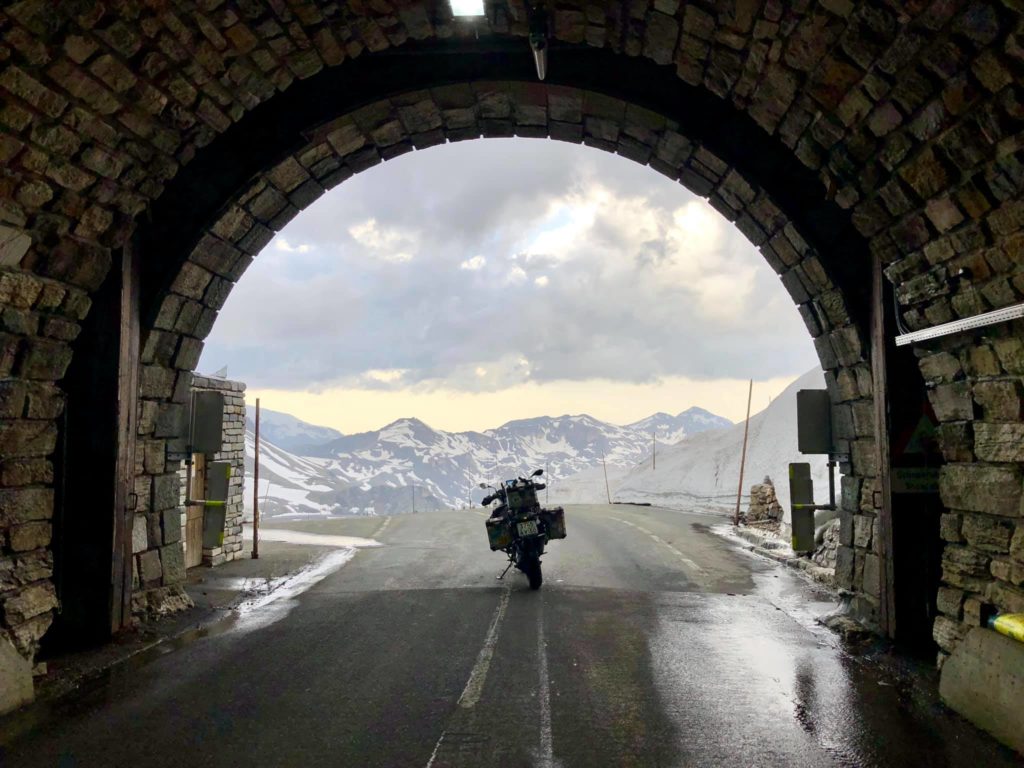
But on that day I was still enduring a little cold. The thing is, I rode along the most beautiful road in Austria, the Grossglockner High Alpine Road, which runs along the slopes of the national park and leads across the pass at an altitude of 2500 m, where snow lies almost until the middle of summer. That was magnificent. The length of this gorgeous highway is 47 km and it is a toll route, so I gave 26 euros for a ride by motorbike. But it was worth it! It took me 2 hours to go these fifty kilometres. And not because the road was difficult there, no. I did it just because there were so many points offering incredibly picturesque views, that I constantly was making a stop to take photos and admire the surrounding beauty.
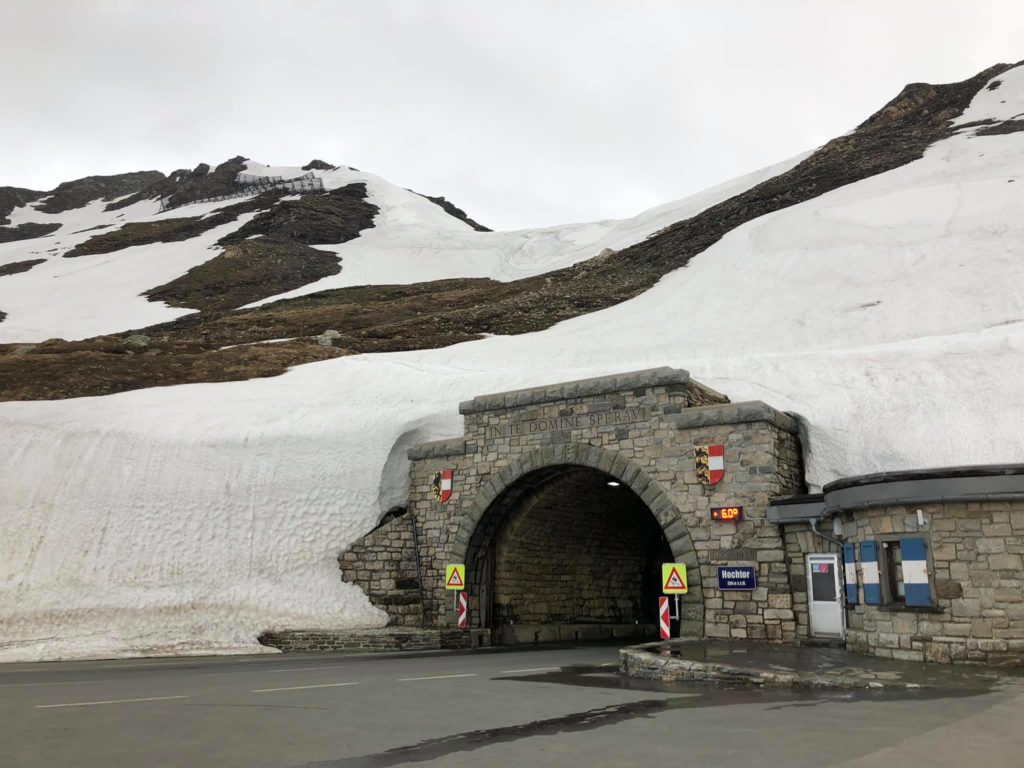
The road had minimal traffic. I've seen only three or four cars for the whole time. So if you travel around Austria by car or by motorbike, try to drive along this path. Here are its coordinates. Start: 47.226816, 12.826528, Finish: 47.039888, 12.843464
You won't regret it!
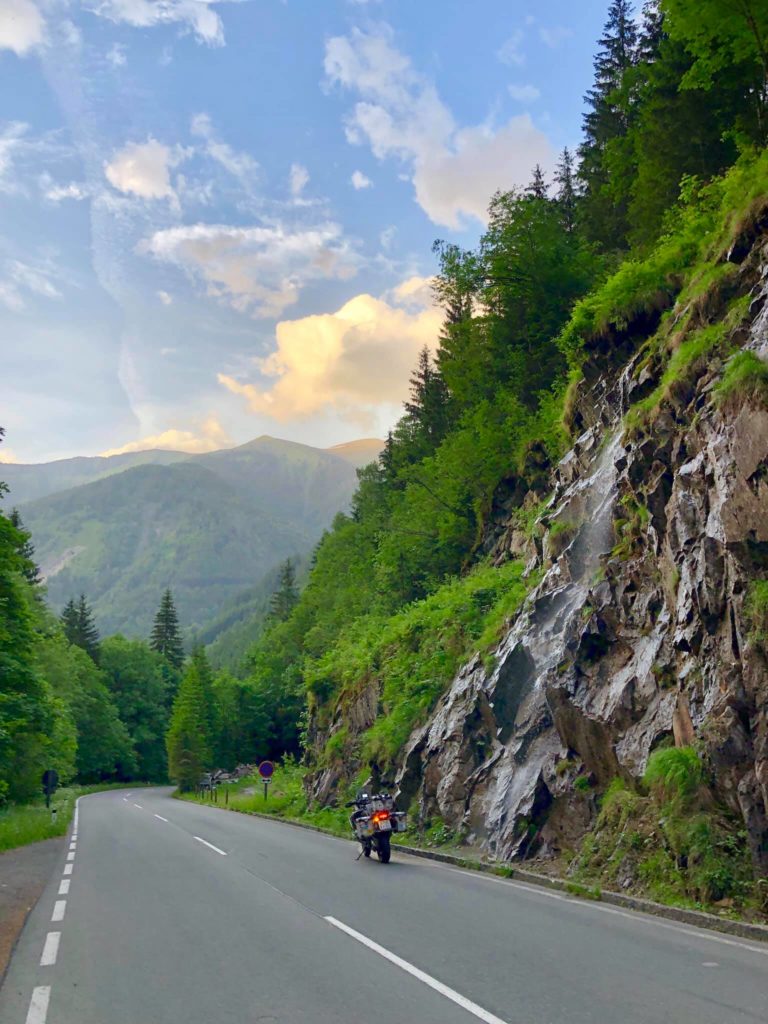
Austria → Slovenia → Italy → Slovenia.
God heard my prayers, but he overdid it a little By noon the dashboard of the motorbike had shown the air temperature of +32°C. It was boiling hot! And yesterday it was +6°C on the pass and a stormy wind. That's the contrast the weather gave.
And today I went across the territory of three countries (and visited one of them even twice)!
And it all started with my decision to turn off the direct route and ride along the most beautiful road in Slovenia, which leads across the Vršič pass (I followed my friends' recommendation). That hook made up 150 km, but it was worth it! The pass is not very high, it's only 1611 m. But there are 50 hairpin turns in it (those are turns of 180°) and the way really fascinates with its views of huge, grey rocks, precipices and a crystal clear river, which originates from the snow-capped peaks of these giants.
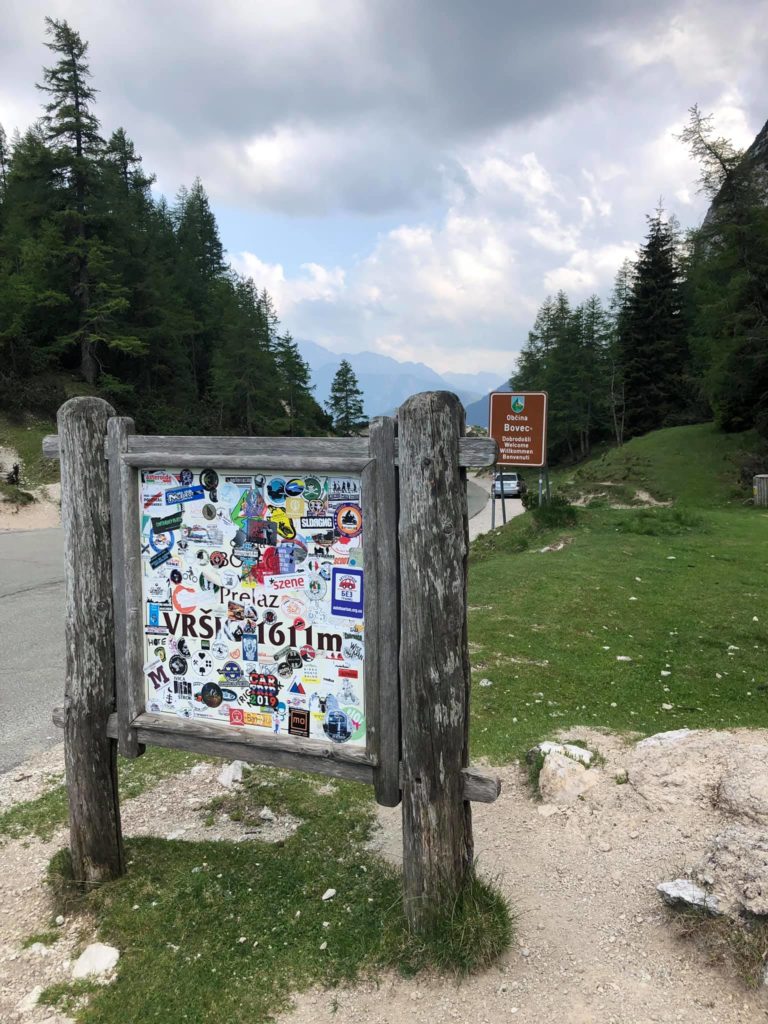
After the pass I programmed on the navigator the fastest route to Ljubljana, the capital of Slovenia, where I planned to spend the night. My motorbike took the part of "Ivan Susanin", showed a distance of 150 km and drew a sinuous purple line on the screen. But the "fastest route" resulted to be not so fast. I experienced mountain serpentines, ascents and descents, then, suddenly, a blue signmark with the inscription "ITALIA" appeared, all plastered with stickers. I kept riding across Italy: towns, villages, signmarks, hoardings were in Italian. And finally I ran upon a blue signmark "SLOVENIA". It's good that there were no checkpoint borders, otherwise I would have circled these wonderful countries until night!
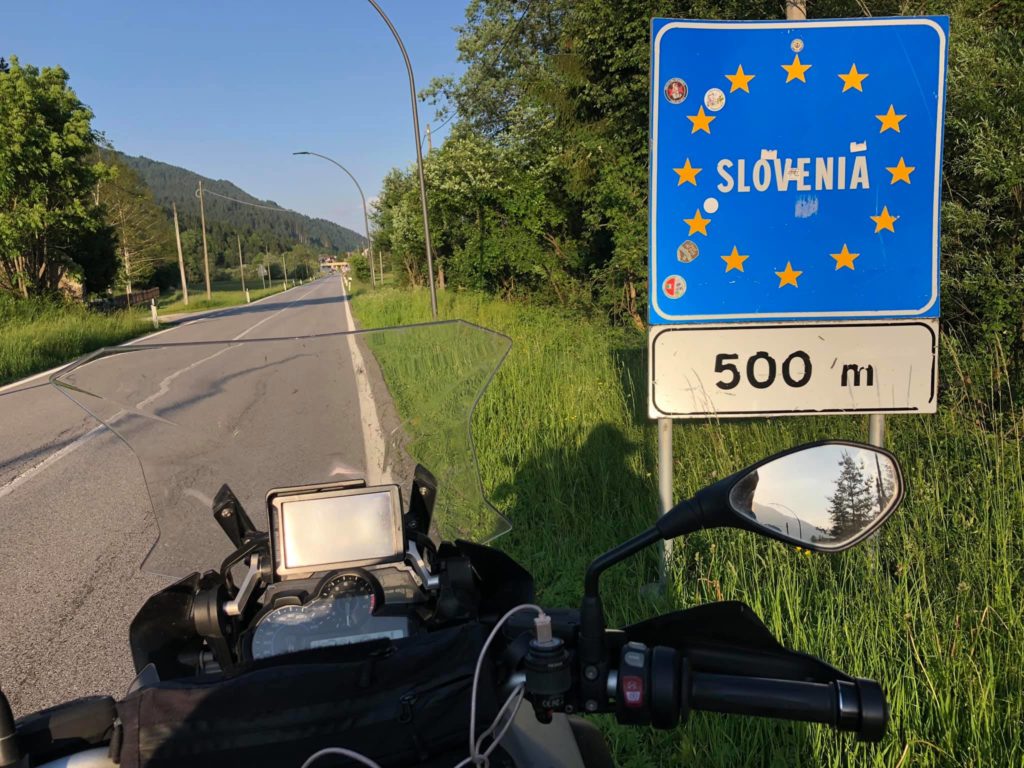
And I made one more unexpected discovery on the border between Austria and Slovenia, when I was going across the top of the Wurzenpab pass. I faced a Soviet T-34 tank. Just a tank. It was placed in front of a Czech hedgehog and the barrel was pointed towards Austria. I didn't find any description plates.
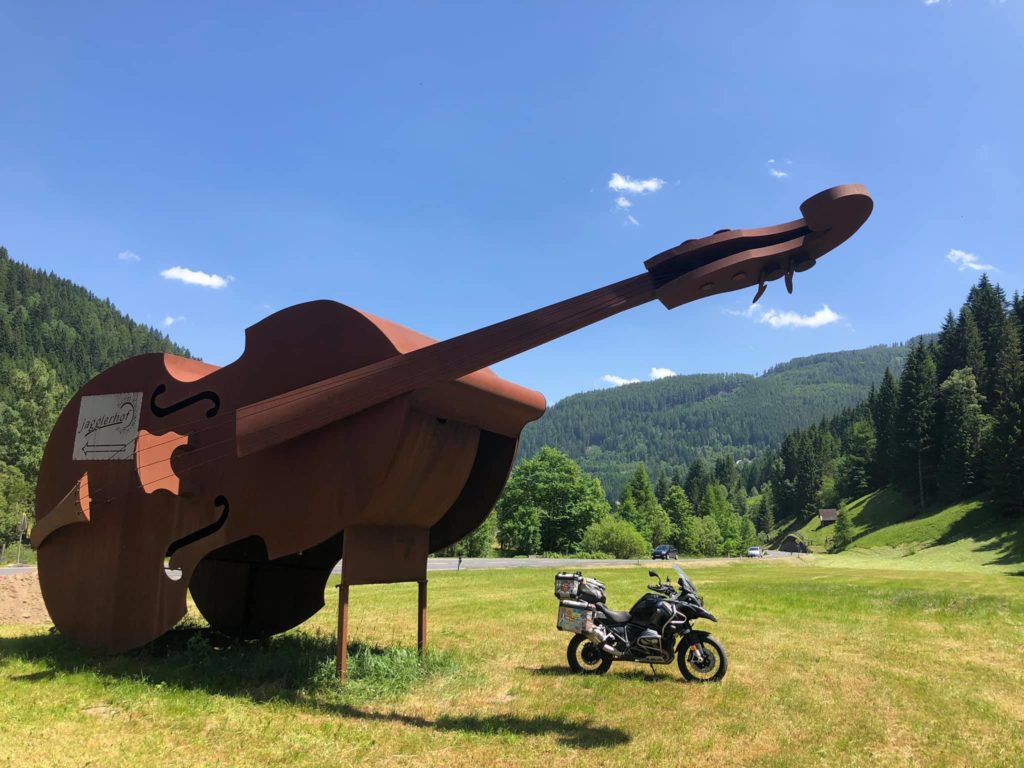
I arrived in Ljubljana at 9 p.m. All in all, I had overcome only 450 km, but it's not so little if we consider mountainous roads with a thousand turns passed.
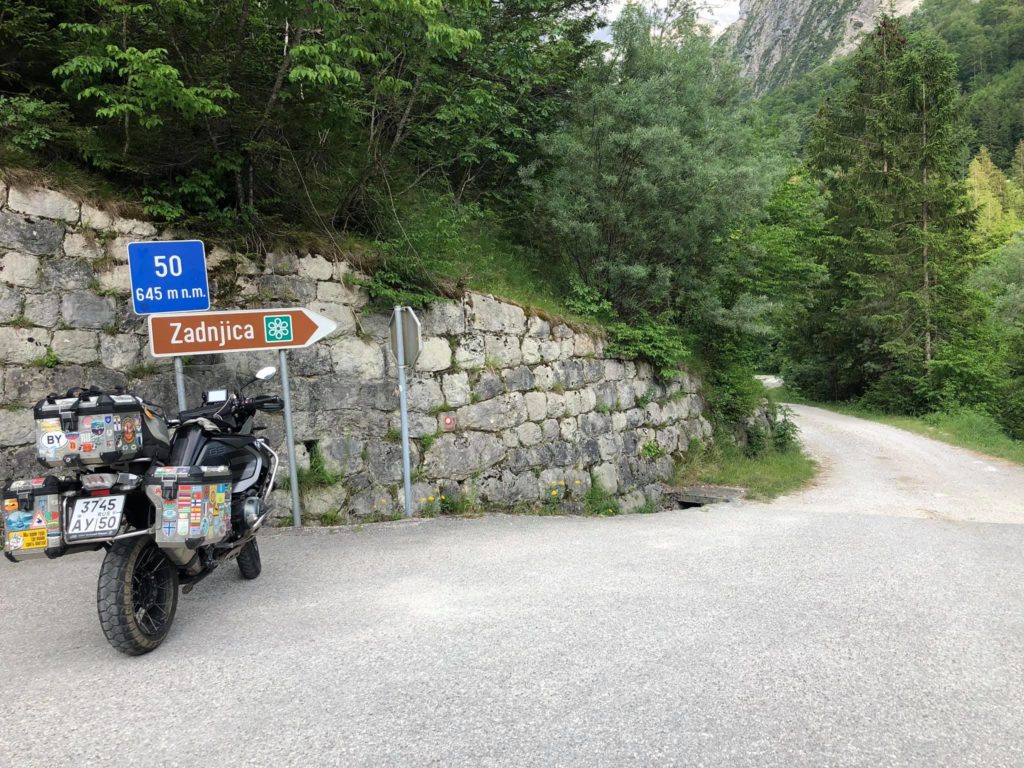
"Do you know who stands next to me in the photo? That's Melania Trump's father! We are friends, he lives not far from here", said Martin, the owner of a small cozy hotel in the suburbs of Ljubljana, showing me a photo on the wall. When I entered the hotel, which I had booked on Booking.com half an hour before, the first thing I noticed were the walls of the lobby hung with dozens of photos depicting hundreds of smiling beautiful girls in bikinis. I took one more look and realized that they all were participants of the beauty contests "Miss Slovenia" or "Miss Ljubljana". And in almost every photo I spotted a happy man with his arm around the waist of one or two pretty women. Of course, it was Martin himself. However, I didn't find a photo with Melania. That one was probably kept in the safe, I suppose.
"Let's go, I'll show you one more thing", he said. Martin opened the locker door with a small key and took out a neatly folded Russian flag with fringe, tassels and a shaft.
"One Russian admiral gave it to me. He is Putin's friend", Martin added proudly. "Shall we take a photo together? Let's go to your motorbike!"
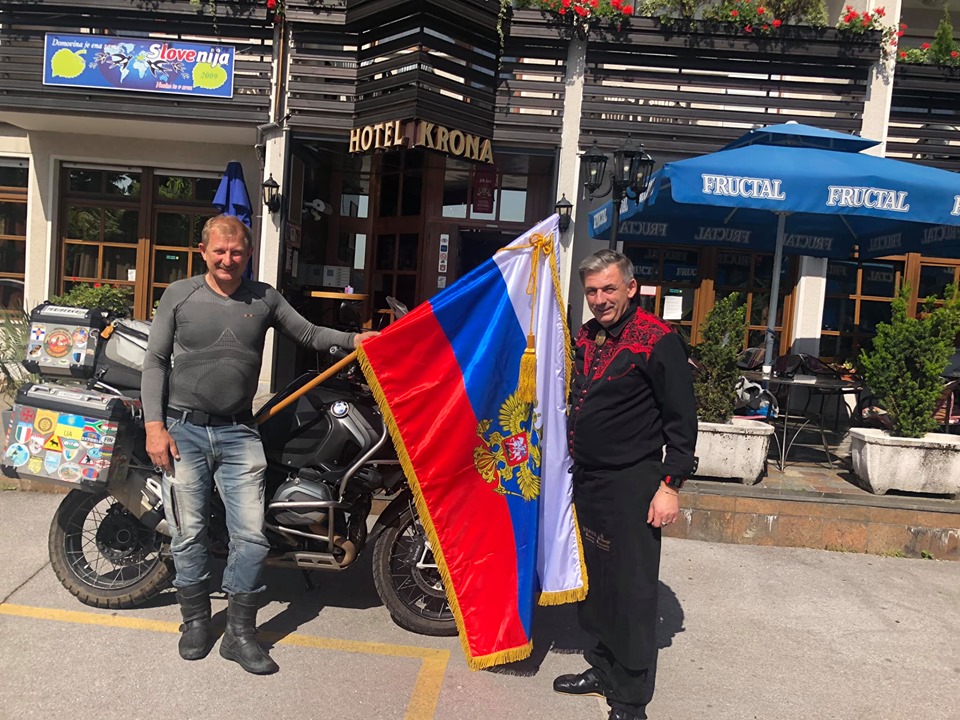
"I would rather take a photo with the winner of "Miss Slovenia" contest", I thought, "but whatever! Flag is also good". Having said goodbye to the hospitable owner of the Krona Hotel, I headed for one of the most beautiful places in Slovenia, the Bled Castle, which is situated on the shore of the lake of the same name, 50 km from the capital of Slovenia. The castle itself is located on top of a 150-metre cliff and its walls offer a magnificent view of the lake.
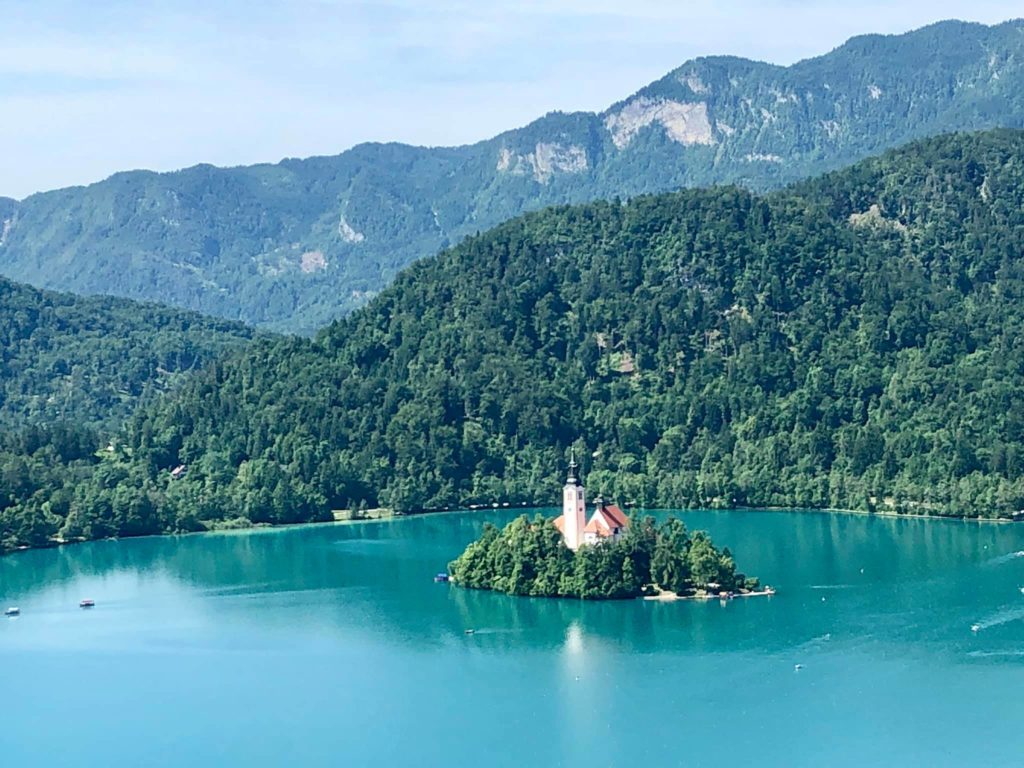
You won't find anything exciting inside the castle while squeezing through the crowds of the Chinese tourists, who are brought here by thousands by huge couches. Anyway, it's worth having a cup of coffee at the table on the shore of this beautiful lake.
Croatia
Do you think the following may be possible? You negotiate on a city tour with a guide, he greets you with a luxury BMW X6, shows you all the sights on a three-hour drive, accompanying it with an interesting excursion, then invites you to a wonderful restaurant, pays off your lunch, including a bottle of amazing white wine, buys you souvenirs, after that, takes you to the hotel and does not charge you a penny for all this?
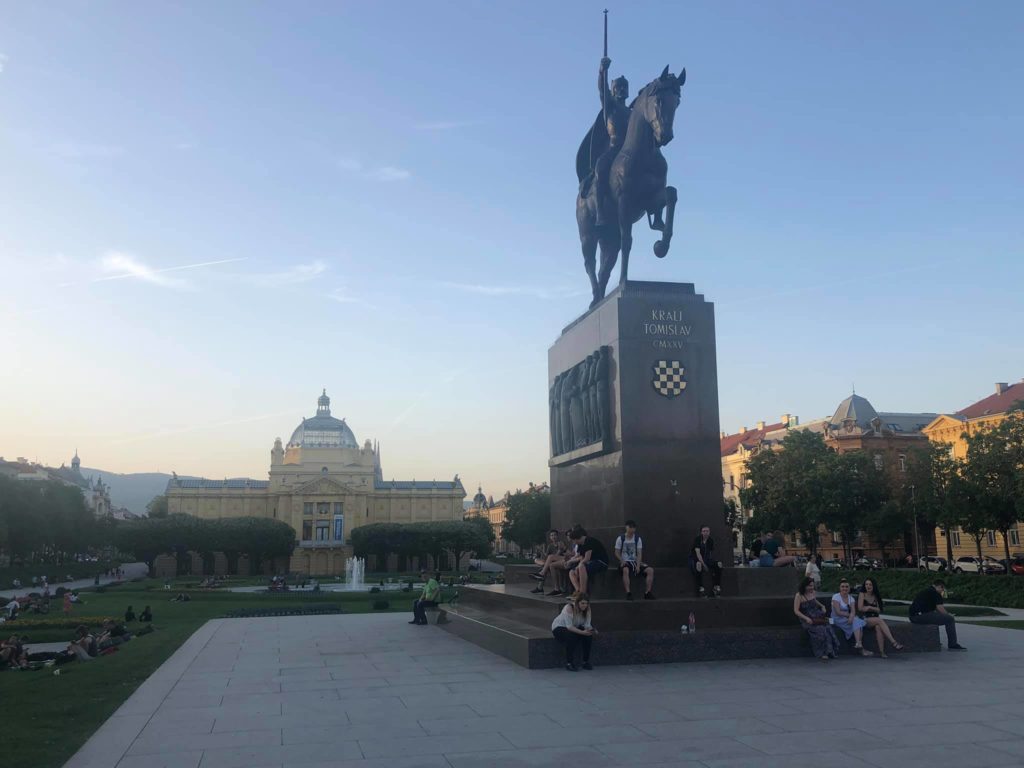
And that's how I spent my day in the capital of Croatia, Zagreb. Actually, this time the guide was my classmate, Kostya Darmanian, who had been living and working there for about twenty years.
Either because the guide made the tour with great enthusiasm or the wine was awesome, in general, I liked Zagreb. The architecture in the city centre is interesting: there are majestic buildings like in Vienna. The parks, restaurants, cafés are crowded with young people. Also, when I was riding across Slovenia yesterday, I noticed that there were a lot of pretty girls in the streets!
I left Zagreb the next day and went towards the sea. The highways in Croatia are gorgeous! Just a song! The speed limit is 130 km/h, but you can go much faster. It took me 2.5 hours to reach Zadar, an ancient port city in the Adriatic Sea, which was 300 km away. And another 1.15 h later I was already in Split, another famous touristic centre.
Those are very interesting towns, similar to each other to a certain extent. There are granite embankments, at the piers of which dozens of snow-white yachts are docked, the old towns with fortress walls, bell towers and narrow streets along which crowds of tourists wander. Bars, summer cafés, souvenir shops and the vacationers are everywhere. When I visited them, it was hot, the temperature was +36°C. Even the third bottle of water and the second bottle of beer didn't help. My thermal underwear got wet and sticky. I sadly recalled Ireland and Scotland with their coolness and daily rains.
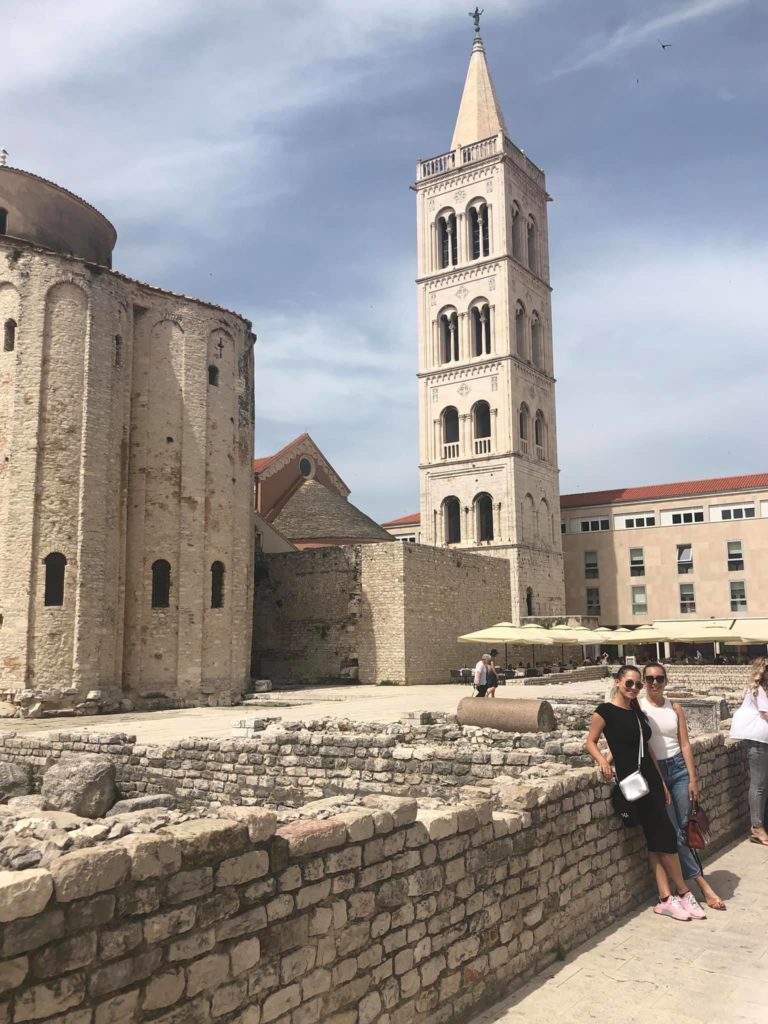
I didn't go to Dubrovnik and, having looked at the navigator, decided to head for Sarajevo, the capital of Bosnia and Herzegovina. "It's only 300 km away, so it will take me not more than 3 hours", I thought recklessly. But in the border between Croatia and Bosnia, the motorway ended. I hadn't thought of that. Neither had I expected that I would have to ride along a narrow single-lane road, following the mountain serpentines, passes and unlit tunnels for about 150 km at night.
I crawled to the hotel in the centre of Sarajevo at half past midnight.
Bosnia and Herzegovina.
It's one of the poorest countries in Europe and you immediately notice this fact as soon as you cross the border.Roads, houses, cars are not brand new, to put it mildly. But the people are friendly. I stopped in some village, having seen two elderly men sitting and smoking. I decided to ask which way was better to go. They offered me a cigarette, asked where I was from. Their language is distantly similar to ours. They said that they had still learned Russian at school. But it had been a long time ago. Nevertheless, you can understand them if you want. Personally, I had experienced speaking with the Mongols for half an hour and it had been much more difficult than the aforementioned conversation, I would say.
Sarajevo, the capital of Bosnia and Herzegovina, is not a big city with a population of about 300 thousand, which was stretched out in a gorge along the narrow Miljacka river. It was founded in the 13th century and had been a part of the Ottoman Empire for almost 500 years. Recently it had been a multicultural city, in which Muslims, Catholics and Orthodox lived in peace. Jews had been completely exterminated during the Second World War.
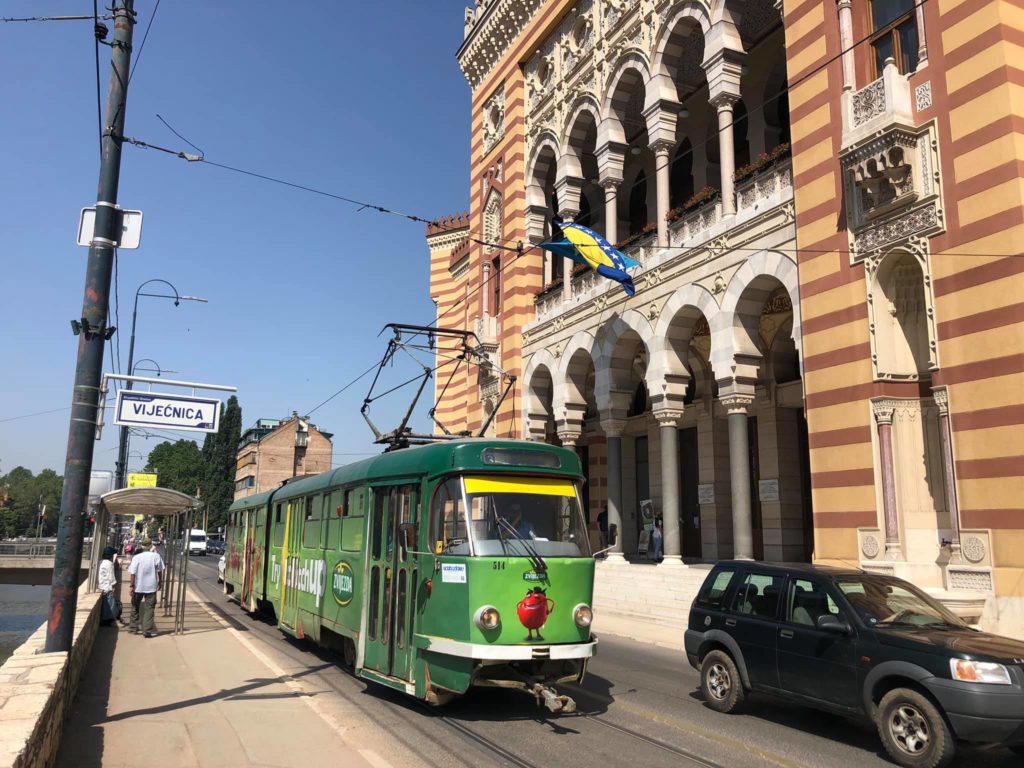
But in 1992 terrible events began to happen there. A civil war broke out because of religion. The city was under siege for about three years, as a result, thousands of military and civilians died. Then the UN troops, which accussed the Serbs of the genocide of Muslims, were brought in. Belgrade was bombarded by the NATO air forces. All in all, it were dark times. As a result, Orthodox Serbs were forced to leave the city and now Sarajevo can be considered completely Muslim. There are many mosques and women in hijabs. It seemed like I was walking around some Turkish city. There are also a lot of tourists, especially in the main street, which looks rather decent in comparison with the neighboring ones.
I went to a large Catholic church in the centre, which was in excellent condition, everything was tidy and very beautiful. Besides me, there was one nun, doing something. Next to the church there was an exhibition dedicated to the history of genocide in Srebrenica, when about eight thousand Bosniak Muslims had been killed. I saw the photos, videos, eyewitness testimonies… A war, especially on religious ground, is a terrible thing that turns people into crazed animals.
And Sarajevo has fully experienced this lately. By the way, let me remind you that the beginning of the First World War was the incident that took place here. On the 28th of June in 1914 the heir to the Austro-Hungarian throne, archduke Franz Ferdinand, and his wife were killed. This is what an interesting city with a dark and tragic fate in the centre of Europe is like.
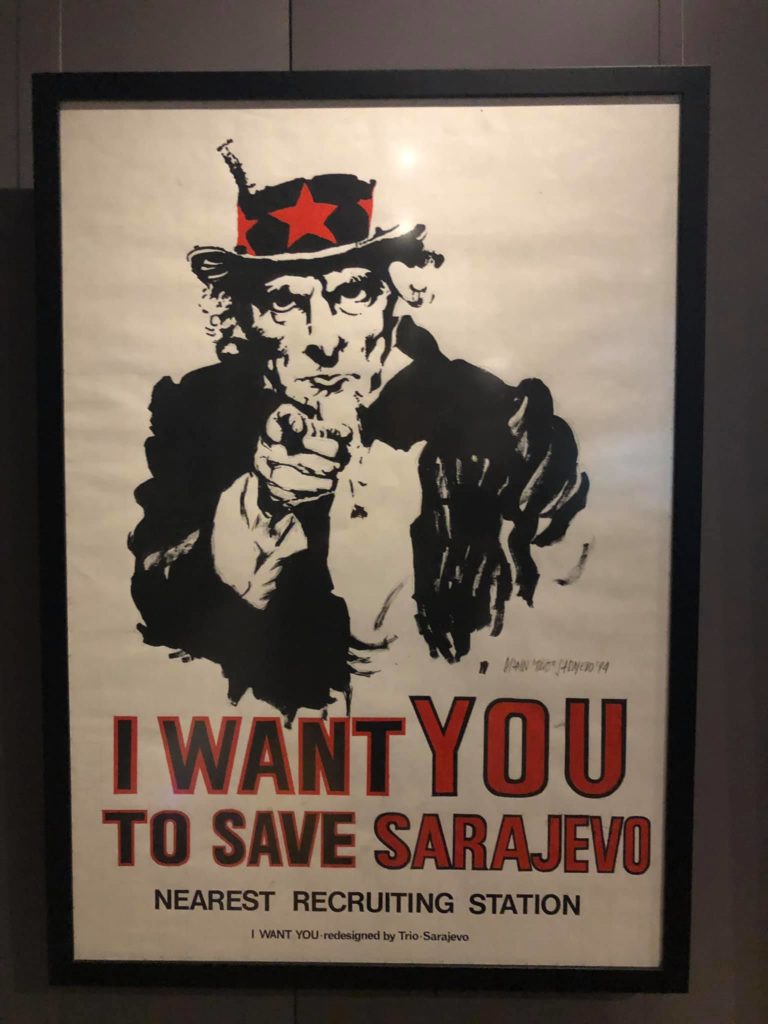
Drvengrad
There is one unusual place on the border between Serbia and Bosnia and Herzegovina, which has several names: Drvengrad, Küstendorf, Mokra Gora. It is a village that was built by the Serbian director Emir Kusturica. Drvengrad became an embodiment of his dream of an ideal settlement, in which there is no enmity or hatred and all the people live happily in peace and love.
The village turned out to be very interesting and outstanding. All the houses are wooden. They had been dismantled and brought there from different parts of Serbia. The streets in the village were paved with stone or wood and they have interesting names in honor of people whom Kusturica considered significant. They are mostly great directors and artists. A tourist can live in the village for a while. There is a real restaurant, a temple, shops and a fake prison in which there are only two prisoners: George Bush, the former President of the USA and Javier Solana, the NATO Secretary General, during whose reign that organisation bombed Yugoslavia.
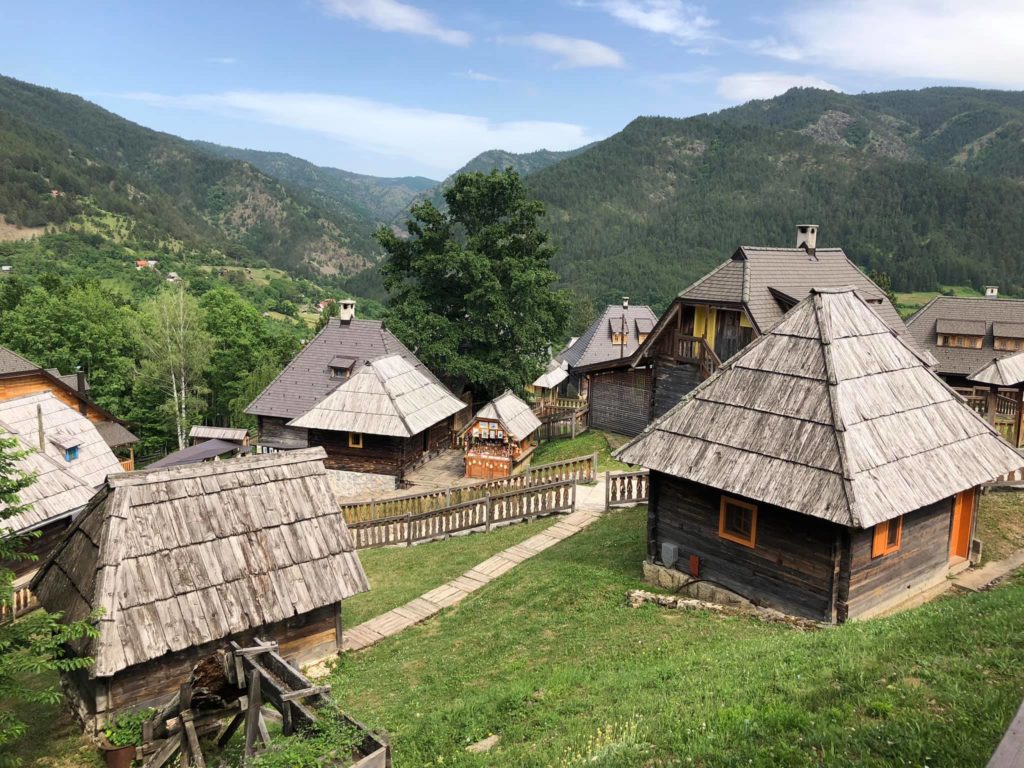
Different cultural events are often held in the village, and Kusturica himself comes here. He does not live there permanently. At least, I didn't find him.
The village was used as the scenery for his film "Life as a Miracle", which, unfortunately, I have not watched.
The front wheel of my motorbike got stuck in a snowdrift two metres high. The road ended. There were about 25 m left to the tunnel laid through the mountain range, but this distance seemed impossible to overcome.
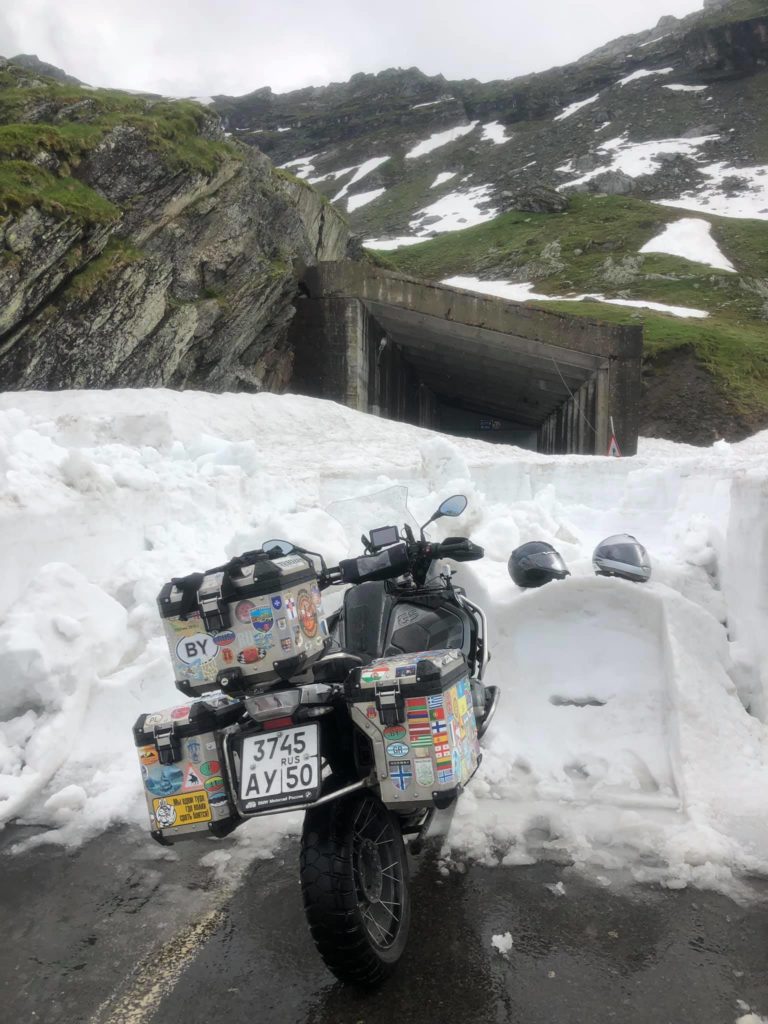
The Transfăgărășan is the most beautiful road in Europe, according to the British edition of Top Gear. I've been dreaming of riding along it for a long time. After the Norwegian "Trollstigen" and the Stelvio pass in the Alps, it was the third road of my desire. The problem is that the Transfăgărășan is open only a couple of months a year, from July to August. The rest of the year there is snow everywhere. Lots of snow.
After riding 33 km west from the town Făgăraș, we turned towards the mountain range of the same name, which related to the Romanian Carpathians, through which this road had been paved in the 70s of the last century.
A few kilometres later, the serpentine began. The height indicators on the navigator were rapidly increasing, and the temperature kept falling. We went 300, 500, 800 m high, the asphalt was still good and dry, so we were passing the hairpin turns with the motorbike maximum angle of inclination. The landscape wasn't interesting yet: just a forest on both sides. At an altitude of 1240 m in front of a small tunnel we ran upon concrete obstacles blocking the road, a signmark "entry is prohibited" and corresponding inscriptions on the billboards. The road was closed. But could fences and prohibiting signamarks stop us?
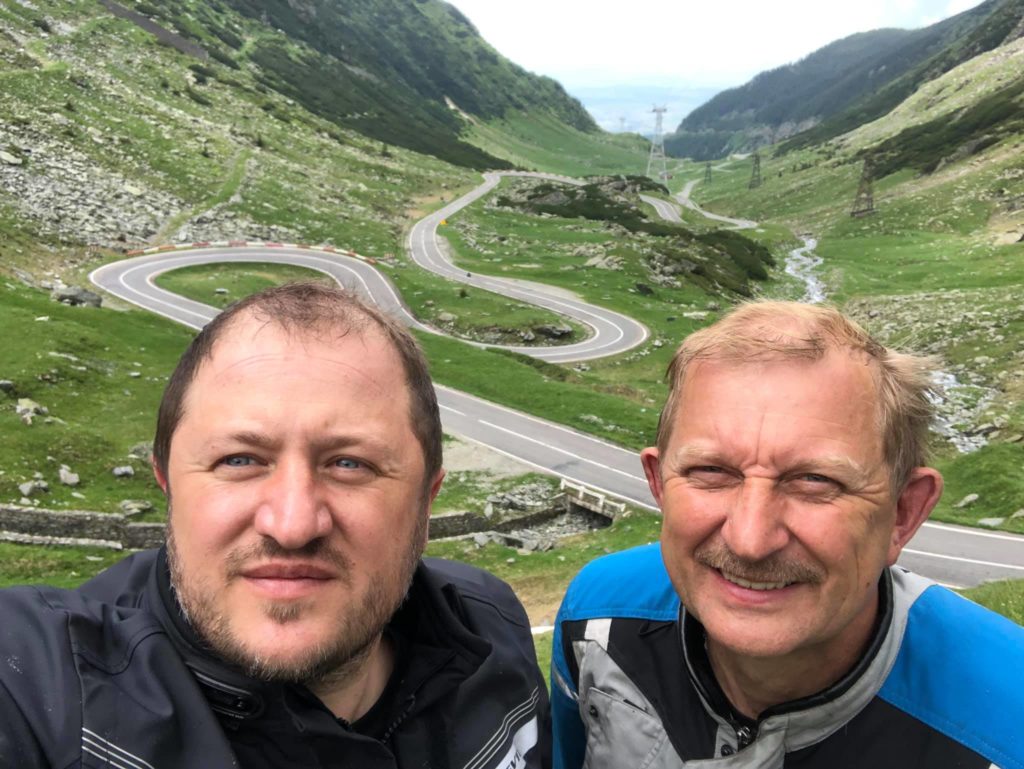
After the height of 1500 m, the vegetation gradually disappeared and we saw magnificent views of the gorge and the plain. The vertical rocks, from which large stones and small rubbles fell onto the asphalt, snow-capped peaks of the mountain range above, a riot of greenery below and numerous waterfalls made up the landscape that impressed us so much! At an altitude of 1700 m the snow appeared. The higher we ascended, the bigger the snow drifts on the roadsides became. They gradually turned into high snow walls, which were several metres high. And at the point of 2040 m high the front wheel of my motorbike bumped into one snowdrift, which blocked the entrance to the tunnel leading to the opposite side of the pass.
That's a pity... But, at least, we have reached the top and passed half of the route. Let the second half of the way remain unconquered like a dream that hasn't fully come true, meaning that it will be necessary to return one more time.
That day I had a wonderful guide, Oleg Negara. What do you think, where I had got acquainted with him? Well, I had met him on the bridge over the Vitim river on the Baikal–Amur Mainline at night. He and his friends had driven by jeeps from Romania to BAM across the whole of Russia! And yesterday, according to our plan, we also were going to visit the famous castle of Count Dracula, the most well-known and bloodthirsty vampire of all time!
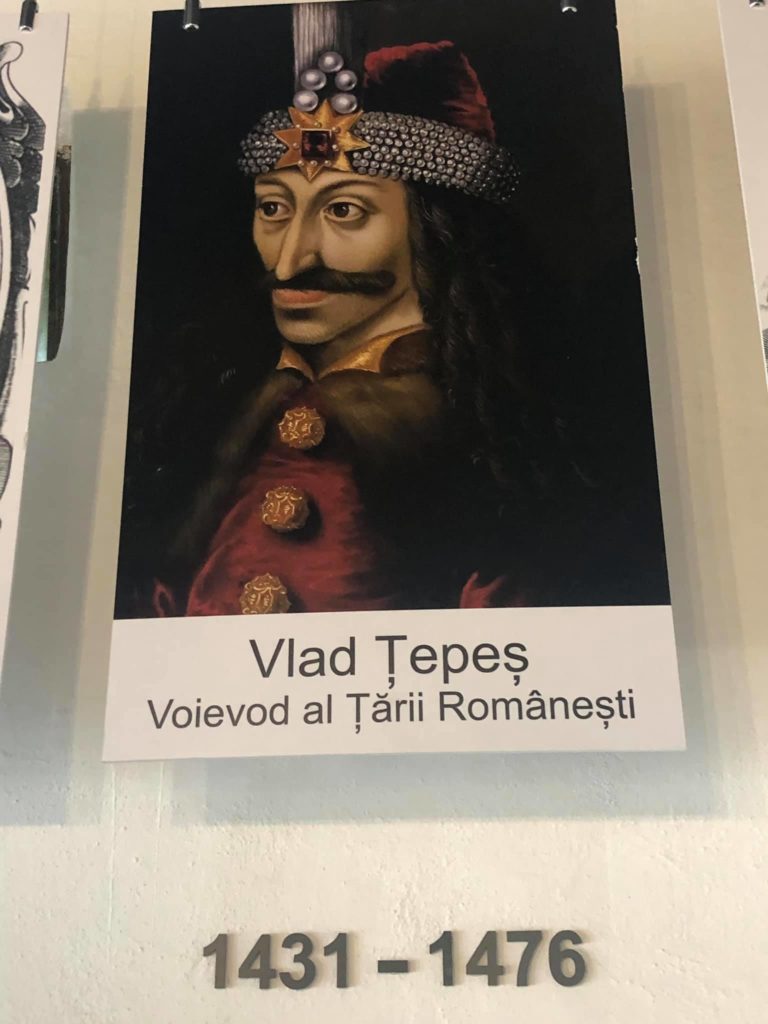
Actually, this is a fictional character and his prototype, Vlad the Impaler ruled these lands in the 15th century. He was distinguished by harsh character. Many people were sentenced to be impaled or died in result of specific bloody tortures.

That day Oleg and I overcame 400 km along various mountain roads in central Romania. Our trip ended with dinner in the pavilion. We had a barbecue and a bottle of fine wine, which Oleg brought from his homeland, Moldova.
The checkpoint officer on the border between Slovakia and the Ukraine looked at me in surprise, having seen my passport.
"I don't remember the Russian have ever passed here on motorbikes", he said. "Are you sure that they will let you through there?", he looked in the direction of the Ukrainian checkpoint, located a hundred metres from the barrier.
"No, I'm not sure", I replied with a smile. "If they don't, I'll come back. Okay?"
"Well, good luck then", the Slovak border guard handed me a passport with a stamp of leaving the Schengen area in it. The whole procedure took about ten minutes.
It turned out to be much more difficult to get into the territory of the Ukraine. Since I had neither a document confirming the illness or death of my relative, nor an invitation to some official events, etc., there was little probability to find a valid reason for my desire to cross the border.
The guards of the Maly Berezny checkpoint were even more surprised than their colleagues from Slovakia when they held my passport in their hands. They made calls, coordinated with the authorities, then with the representatives of counterespionage and the Security Service of Ukraine, recorded an interview about the purpose of my visit, my brief biography. They also asked me if I had friends or acquaintances in Donetsk and Luhansk Republics, did my fingerprinting and checked if I had enough cash for the duration of my stay in the Ukraine. All this took more than two hours. And after a long wait, I finally got permission to cross the border of the Ukraine in transit terms and stay there for three days! Superb! I don't need more for walking around Lviv and visiting my friends in Kiev.
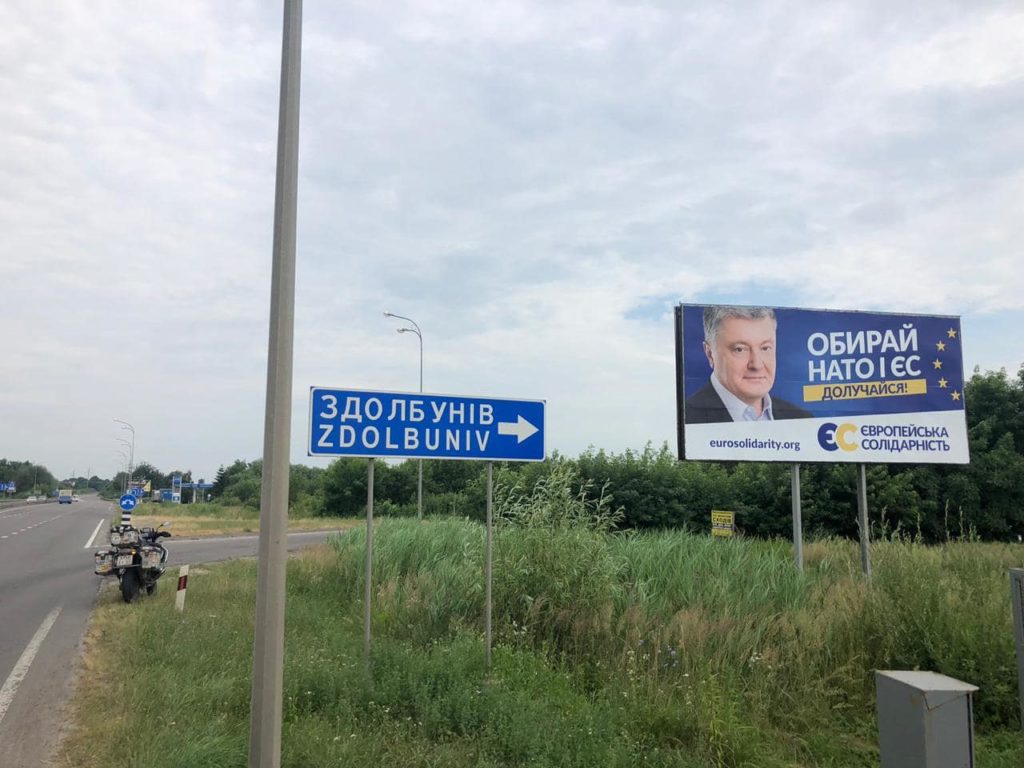
By the way, all those people, border guards and customs officers were very polite and friendly. And the officer of the Security Service of Ukraine even apologised several times for the inconveniences. Well, if I hadn't got the help of my wonderful friend who happened to be on duty that day, then I would definitely have had to go back. Thank you, Victoria!

In the evening I arrived in Lviv and stayed in a modern new hotel near the city centre for quite a reasonable price of €37 (including a great breakfast). The following morning I went on a three-hour walk around Lviv and the same day in the evening I arrived in Kiev, where my friends had already been waiting for me on the bank of the Dnieper in a boat with wine, snacks, water skiing equipment and in a great mood!
comments powered by HyperComments Cap-travel.ru
Cap-travel.ru
